#abd al-aziz ibn musa
Explore tagged Tumblr posts
Text
If anyone wants to read new historical fiction related to the Abd al-Aziz chapter of the Al Andalus. Historical Figures book, recently a novel has been published. This novel is Egilona, Reina de Hispania (Egilona, Queen of Hispania), writen by José Soto Chica. The bulk of the story is based on the texts of the Mozarabic Chronicle and Arabic sources such as the Fath al-Andalus codex, the anonymous Ajbar Maimu'a or the works of the historian Al-Maqqari and the caliph Al-Hakam. In fact, all chapters begin with a fragment of these writings.

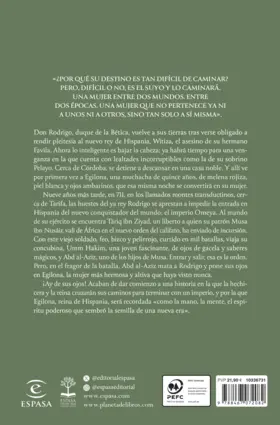
Synopsis
Egilona, the last queen of Hispania, a powerful woman between two cultures, between two eras, the Gothic and the Arab, fascinates us in this memorable historical novel.
Don Rodrigo, Duke of Bética, returns to his lands after being forced to pay homage to the new king of Hispania, Witiza, the murderer of his brother Favila. Now the smart thing is to lower his head; There will be time for revenge. Near Córdoba, he stops to rest in a noble house and there he sees for the first time Egilona, a fifteen-year-old girl with reddish hair, white skin and amber eyes, who that same night will become his wife.
Nine years later, in 711, near Tarifa, the hosts of the now king Rodrigo prepared to prevent the entry into Hispania of the new conqueror of the world: the Umayyad empire. In command of his army is Tariq ibn Ziyad, a freedman whom his patron Musa ibn Nusayr, vali of Africa in the new order of the caliphate, has sent on a raid. With this old soldier, ugly, cross-eyed and red-haired, hardened in a thousand battles, travels his concubine, Umm Hakim, a fascinating young woman, with doe eyes and magical knowledge, and Abd al-Aziz, one of Musa's sons. In and out, that's the order. But, in the heat of battle, Abd al-Aziz kills Rodrigo and sets his sights on Egilona, the most beautiful and haughty woman he has ever seen.
Woe to his eyes! They have just begun a story in which the sorceress and the queen will cross paths to end an empire, and for which Egilona, queen of Hispania, will be remembered "as the hand, the mind, the powerful spirit that sowed the "seed of a new era."
Some comments from the author of the novel about the historical figure of Egilona, the historical setting, the conquest and her marriage to Abd al-Aziz, from this interview:
"Events that have usually been told very poorly"
"She was a transitional character who was everything with the Visigoths and is everything again in the new world of the Muslims, but a lot of nonsense has been written about her"
"I have opted for an intermediate solution in the novel"
"After Rodrigo's death it stands as a symbol of resistance, but after the second defeat of the Visigoths in Écija I made Al-Aziz capture it. Let's think about Aztec Mexico: the Spanish were a very small force and they relied on the nobility. The Arabs did the same. This marriage was not the exception, but the norm, and there are the examples of Teodomiro's daughter or Witiza's granddaughters. It was a time when collaboration was needed"
"If I put on my historian's suit and limit myself to what the sources say, I am tied hand and foot. Now, a novelist does have licenses and I imagine that story of hate and love with Al-Aziz" "But I think the result is very coherent: it is a novel by a historian who specializes in the period and which, literary speaking, proposes psychological solutions to the 8th century."
"For me, her forgetfulness is intentional from her own time: for those who resisted in Asturias she was a traitor; for the Arabs, she was responsible for the perfect Muslim warrior falling into the conspiracy. She was guilty for going over to the enemy or subverting the order, and this has greatly influenced nineteenth-century and current Spanish historiography"
"This novel, at the level of people who seek to learn history with fiction, is the story of the Islamic conquest of Hispania based on what we really know, which has changed a lot in the last twenty years"
"It's not about good ones and bad ones, but about people like us who have to survive by accepting that the world has changed or by rebelling against it."
#egilona reina de hispania#egilona queen of hispania#bookblr#historical fiction#novel#books#josé soto chica#queen egilona#ailo#king rodrigo#rodrigo king of the goths#abd al-aziz ibn musa#abd al aziz#musa ibn nusayr#tariq ibn ziyad#book scans related#hispania#al andalus#spania#rey don rodrigo#umm hakim
17 notes
·
View notes
Text
Sa'id bin Abd al-Aziz reported that Sulayman bin Musa said:
The people who sit with an alim (scholar) are of three types:
🌫 A man who takes all that he hears (from that scholar).
🌫 A man who does not write what he hears. This type is referred as one who (only) sat in the presence of the alim.
🌫 A man who is selective (of what he hears and does not blind-follow every statement), and he is the best of them.
Ibn Asakir, Tarikh Dimashq | 22/386
6 notes
·
View notes
Text
ليس للمرأة توكيل أحد مكان الولي ما لم يكن قد عهد إليها بذلك، وبناء عليه، فلا يصح النكاح دون إذن الولي مباشرة أو نيابة منه وتوكيلا .
جاء في المغني لابن قدامة: أن النكاح لا يصح إلا بولي، ولا تملك المرأة تزويج نفسها ولا غيرها، ولا توكيل غير وليها في تزويجها، فإن فعلت، لم يصح النكاح، روي هذا عن عمر، وعلي، وابن مسعود، وابن عباس، وأبي هريرة، وعائشة ـ رضي الله عنهم ـ وإليه ذهب سعيد بن المسيب، والحسن، وعمر بن عبد العزيز، وجابر بن زيد، والثوري، وابن أبي ليلى وابن شبرمة، وابن المبارك وعبيد الله العنبري، والشافعي، وإسحاق، وأبو عبيد، وروي عن ابن سيرين، والقاسم بن محمد، والحسن بن صالح وأبي يوسف: لا يجوز لها ذلك بغير إذن الولي، فإن فعلت كان موقوفا على إجازته، وقال أبو حنيفة: لها أن تزوج نفسها وغيرها، وتوكل في النكاح، لأن الله تعالى قال: فلا تعضلوهن أن ينكحن أزواجهن {البقرة: 232} أضاف النكاح إليهن ونهى عن منعهن منه، ولأنه خالص حقها، وهي من أهل المباشرة، فصح منها، كبيع أمتها، ولأنها إذا ملكت بيع أمتها وهو تصرف في رقبتها وسائر منافعها، ففي النكاح الذي هو عقد على بعض منافعها أولى، ولنا أن النبي صلى الله عليه وسلم قال: لا نكاح إلا بولي ـ روته عائشة، وأبو موسى، وابن عباس، قال المروذي: سألت أحمد ويحيى عن حديث: لا نكاح إلا بولي ـ فقالا: صحيح، وروي عن عائشة، عن النبي صلى الله عليه وسلم، أنه قال: أيما امرأة نكحت نفسها بغير إذن وليها، فنكاحها باطل باطل باطل، فإن أصابها، فلها المهر بما استحل من فرجها، فإن اشتجروا، فالسلطان ولي من لا ولي له ـ رواه الإمام أحمد، وأبو داود وغيرهما، وأما الآية، فإن عضلها الامتناع من تزويجها، وهذا يدل على أن نكاحها إلى الولي، ويدل عليه أنها نزلت في شأن معقل بن يسار، حين امتنع من تزويج أخته، فدعاه النبي صلى الله عليه وسلم فزوجها، وأضافه إليها، لأنها محل له. اهـ باختصار.
جاء في مصنف ابن أبي شيبة 3/456 : ﺃﺑﻮ ﺑﻜﺮ ﻗﺎﻝ: ﻧﺎ اﺑﻦ ﻋﻠﻴﺔ، ﻋﻦ اﺑﻦ ﺟﺮﻳﺞ، ﻋﻦ ﻋﻜﺮﻣﺔ ﺑﻦ ﺧﺎﻟﺪ، ﻗﺎﻝ: ﺟﻤﻌﺖ اﻟﻄﺮﻳﻖ ﺭﻛﺒﺎ، ﻓﺠﻌﻠﺖ اﻣﺮﺃﺓ ﻣﻨﻬﻢ ﺗﺒﺚ ﺃﻣﺮﻫﺎ ﺇﻟﻰ ﺭﺟﻞ ﻣﻦ اﻟﻌﻮاﻡ ﻏﻴﺮ ﻭﻟﻴﻬﺎ، ﻓﺄﻧﻜﺤﻬﺎ ﺭﺟﻼ ﻗﺎﻝ: «ﻓﺠﻠﺪ ﻋﻤﺮ اﻟﻨﺎﻛﺢ، ﻭاﻟﻤﻨﻜﺢ، ﻭﻓﺮﻕ ﺑﻴﻨﻬﻤﺎ»
جاء قي ﻣﺴﺎﺋﻞ ﺣﺮﺏ" ﺻ 26 : ﻗﺎﻝ ﺣﺮﺏ: ﺳﺄﻟﺖ ﺃﺣﻤﺪ: اﻣﺮﺃﺓ ﺗﺰﻭﺟﺖ ﺑﻐﻴﺮ ﻭﻟﻲ، ﺛﻢ ﺃﺭاﺩ اﻟﻮﻟﻲ ﺃﻥ ﻳﺠﻴﺰ اﻟﻨﻜﺎﺡ؟
ﻗﺎﻝ: ﺑﻨﻜﺎﺡ ﺟﺪﻳﺪ ﻭﻣﻬﺮ ﻭﺧﻄﺒﺔ ﺟﺪﻳﺪﺓ، ﻭﻻ ﻳﺠﻮﺯ ﺃﻥ ﻳﻘﻮﻝ: ﻗﺪ ﺃﺟﺰﺕ ﺫﻟﻚ اﻟﻨﻜﺎﺡ.
ﻭﻗﺎﻝ: ﻭﺳﺌﻞ ﺃﺣﻤﺪ ﻣﺮﺓ ﺃﺧﺮﻯ ﻋﻦ اﻣﺮﺃﺓ ﺗﺰﻭﺟﺖ ﺑﻐﻴﺮ ﺇﺫﻥ ﻭﻟﻲ، ﺛﻢ ﺑﻠﻎ اﻟﻮﻟﻲ ﻓﺄﺟﺎﺯ؟ ﻗﺎﻝ: ﻻ، ﻭﻟﻜﻦ ﻳﺠﺪﺩ اﻟﻨﻜﺎﺡ.
ﻭﻗﺎﻝ: ﻭﺳﺄﻟﺖ ﺇﺳﺤﺎﻕ ﻗﻠﺖ: اﻣﺮﺃﺓ ﻭﻟﺖ ﺃﻣﺮﻫﺎ ﺭﺟﻼ، ﻓﺰﻭﺟﻬﺎ ﻣﻦ ﺭﺟﻞ ﻛﺎﻥ ﻭﻟﻴﻬﺎ ﻏﺎﺋﺒﺎ، ﺛﻢ ﻗﺪﻡ اﻟﻮﻟﻲ ﻓﺄﺟﺎﺯ اﻟﻨﻜﺎﺡ ﻣﻦ ﻏﻴﺮ ﺃﻥ ﻳﺠﺪﺩ اﻟﻨﻜﺎﺡ، ﺃﻭ ﻣﻦ ﻏﻴﺮ ﺷﻬﻮﺩ؟ ﻗﺎﻝ ﺣﻴﺚ ﺃﺟﺎﺯ اﻟﻮﻟﻲ ﺟﺎﺯ ﺫﻟﻚ اﻟﻨﻜﺎﺡ ﺣﻴﻨﺌﺬ ﻭﺇﻥ ﻟﻢ ﻳﺠﺪﺩ اﻟﻨﻜﺎﺡ، ﻭاﻟﺘﺠﺪﻳﺪ ﻛﺎﻥ ﺃﺣﺐ ﺇﻟﻰ، ﻓﺄﻣﺎ ﺇﺫ ﺃﺟﺎﺯ ﻓﻌﻞ اﻟﺬﻱ ﺃﻧﻜﺢ ﺟﺎﺯﻩ. "
فهذه الأخت يفرق بينها وبين زوجها ويتم إعادة العقد من جديد لفساد العقد الأول إن رغبت بالبقاء على الزوجية .
والله أعلى وأعلم
"Ibn Qudamah states in Al-Mughni that marriage is not valid except with a guardian (wali), and a woman does not have the right to marry herself or others, nor to appoint someone other than her guardian to marry her. If she does so, the marriage is not valid. This is reported from 'Umar, 'Ali, Ibn Mas'ud, Ibn 'Abbas, Abu Hurayrah, and 'A'ishah (may Allah be pleased with them). This is also the view of Sa'id ibn al-Musayyib, al-Hasan, 'Umar ibn 'Abd al-'Aziz, Jabir ibn Zayd, al-Thawri, Ibn Abi Layla, Ibn Shubrumah, Ibn al-Mubarak, 'Ubayd Allah al-'Anbari, al-Shafi'i, Ishaq, and Abu 'Ubayd. It is also reported from Ibn Sirin, al-Qasim ibn Muhammad, al-Hasan ibn Salih, and Abu Yusuf that it is not permissible for her to do so without the permission of the guardian, and if she does, it is suspended (mawquf) upon his approval.
However, Abu Hanifah said that she has the right to marry herself and others, and to appoint someone in marriage, because Allah Almighty said: 'And do not prevent them from marrying their [former] husbands' [Quran 2:232], attributing marriage to them and prohibiting preventing them from it, and because it is her exclusive right, and she is among those who can perform it, just as she can sell her slave woman. But we have the hadith of the Prophet (peace be upon him): 'There is no marriage except with a guardian,' reported by 'A'ishah, Abu Musa, and Ibn 'Abbas. Al-Marwadhi said that Ahmad and Yahya said this hadith is authentic.
And it is also reported from 'A'ishah, from the Prophet (peace be upon him), that he said: 'Any woman who marries without the permission of her guardian, her marriage is invalid, invalid, invalid. If he has consummated it, then she is entitled to the dowry for what he has made lawful of her private parts. And if they dispute, then the ruler is the guardian of the one who has no guardian.' This was reported by Imam Ahmad, Abu Dawud, and others.
As for the verse, it means that preventing her from marriage is the 'adhluha (preventing),' and this indicates that her marriage is up to the guardian. This is evidenced by the fact that it was revealed regarding the case of Ma'qil ibn Yasar, when he refused to marry off his sister, so the Prophet (peace be upon him) summoned him and married her off to her, attributing it to her, because she was under his guardianship."
"Ibn Abi Shaybah narrates in his Musannaf (3/456): Abu Bakr said: [The narrator] Ibn 'Ulayyah, from Ibn Jurayj, from 'Ikrimah ibn Khalid, who said: "I gathered a group of travelers, and a woman among them confided her matter to a man from the common people who was not her guardian. So he married her [to this man]." He said: "Then 'Umar flogged the one who married her and the one who gave her in marriage, and he separated them."
Harb said: "I asked Ahmad: [about the case of] a woman who got married without a guardian, then the guardian wanted to validate the marriage?"
He said: "With a new marriage contract, new dowry, and new proposal, and it is not permissible for him to say: 'I have validated that marriage.'"
And he said: "Ahmad was asked another time about a woman who married without the permission of a guardian, then the guardian approved [of the marriage]?" He said: "No, but he should renew the marriage contract."
And he said: "I asked Ishaq, saying: 'A woman entrusted her matter to a man, and he married her to a man while her guardian was absent, then the guardian came and approved the marriage without renewing the marriage contract or [having] witnesses?' He said: 'Where the guardian approved, that marriage is valid then, even if he did not renew the marriage contract, and renewing it would have been more beloved to me. But since he approved the action of the one who married her, it is valid.'"
"In this case, the sister (the woman who married without a guardian) will be separated from her husband, and the marriage contract will have to be renewed from the beginning, due to the invalidity of the first contract, if she wishes to remain in the marriage."
And Allah Knows Best.
1 note
·
View note
Text
Personas Importantes
Abd- al Aziz, Ibn- al Hassan, Abd- al Aziz Musa Ibn, Ibn Nasayr, Abd- al Aziz III Ibn Saud, Abd- al Malik, Muzzafar, Abd- al Malik Ibn Marwan, Abd- al Munid, Abd- al Muttalib, Abd- al Qadir, Abd- al Rahman I, Abd- al Rahman II, Abd- al Rahman III, Abd- al Rahman IV, Abd- al Rahman- al Qafiqui, Abd- al Raziq, Abd Allah Abd- al Krim, Abdulaziz, Abdulhamit I, Abdulhamit II, Abdullah I, Abdullah II, Abdulmecit I, Abdul Rahman Tunaku, Abu Abdullah Muhammad, Abu Bakr, Abu Khanifa, Abu Nuwas, Abu Salt Umayya, Abul I Hassan
2 notes
·
View notes
Text
Daily Tafsir of Ibn Kathir
Reports which state that the One Who was to be sacrificed was Isma`il, and that this is Correct without a Doubt
Sa`id bin Jubayr, `Amir Ash-Sha`bi, Yusuf bin Mihran, Mujahid, `Ata' and others reported from Ibn `Abbas that it was Isma`il, peace be upon him. Ibn Jarir narrated that Ibn `Abbas said, "The one who was ransomed was Isma`il, peace be upon him. The Jews claimed that it was Ishaq, but the Jews lied.'' It was reported that Ibn `Umar said, "The sacrifice was Isma`il.'' Ibn Abi Najih said, narrating from Mujahid, "It was Isma`il, peace be upon him.'' This was also the view of Yusuf bin Mihran. Ash-Sha`bi said, "It was Isma`il, peace be upon him, and I saw the horns of the ram in the Ka`bah.'' Muhammad bin Ishaq reported from Al-Hasan bin Dinar and `Amr bin `Ubayd from Al-Hasan Al-Basri that he did not doubt that the one of the two sons Ibrahim was commanded to sacrifice was Isma`il, peace be upon him. Ibn Ishaq said, "I heard Muhammad bin Ka`b Al-Qurazi say, `The one whom Allah commanded Ibrahim to sacrifice of his two sons was Isma`il.' We find this in the Book of Allah, because when Allah finishes the story of the one of the two sons of Ibrahim who was to be sacrificed, He then says:
(And We gave him the glad tidings of Ishaq -- a Prophet from the righteous), and
(So, We gave her glad tidings of Ishaq and after Ishaq, of Ya`qub) (11:71). He mentions the son and the son of the son, but He would not have commanded him to sacrifice Ishaq when He had promised that this son would in turn have a son. The one whom He commanded him to sacrifice can only have been Isma`il.'' Ibn Ishaq said, "I heard him say that often.'' Ibn Ishaq reported from Buraydah bin Sufyan bin Farwah Al-Aslami that Muhammad bin Ka`b Al-Qurazi told them that he mentioned that to `Umar bin `Abd Al-`Aziz, may Allah be pleased with him, when he was Khalifah, while he was with him in Syria. `Umar said to him, "This is something about which I have never given any thought, but I see that it is as you say.'' Then he sent for a man who was with him in Syria, a Jew who had become a Muslim and was committed to Islam, and he thought that he had been one of their scholars. `Umar bin `Abd Al-`Aziz, may Allah be pleased with him, asked him about that. Muhammad bin Ka`b said, "I was with `Umar bin `Abd Al-`Aziz. `Umar said to him, `Which of the two sons of Ibrahim was he commanded to sacrifice' He said, `Isma`il. By Allah, O Commander of the faithful, the Jews know this, but they were jealous of you Arabs because it was your father about whom Allah issued this command and the virtue that Allah mentioned was because of his patience in obeying the command. So they denied that and claimed that it was Ishaq, because he is their father.''' `Abdullah bin Al-Imam Ahmad bin Hanbal, may Allah have mercy on him, said, "I asked my father about which son was to be sacrificed -- was it Isma`il or Ishaq'' He said, "Isma`il.'' This was mentioned in Kitab Az-Zuhd. Ibn Abi Hatim said, "I heard my father say, `The correct view is that the one who was to be sacrificed was Isma`il, peace be upon him.''' He said, "And it was narrated that `Ali, Ibn `Umar, Abu Hurayrah, Abu At-Tufayl, Sa`id bin Al-Musayyib, Sa`id bin Jubayr, Al-Hasan, Mujahid, Ash-Sha`bi, Muhammad bin Ka`b Al-Qurazi, Abu Ja`far Muhammad bin `Ali and Abu Salih, may Allah be pleased with them all, said that the one who was to be sacrificed was Isma`il.'' Al-Baghawi said in his Tafsir, "This was the view of `Abdullah bin `Umar, Sa`id bin Al-Musayyib, As-Suddi, Al-Hasan Al-Basri, Mujahid, Ar-Rabi` bin Anas, Muhammad bin Ka`b Al-Qurazi and Al-Kalbi.'' This was also reported from Ibn `Abbas and from Abu `Amr bin Al-`Ala'.
(And We gave him the glad tidings of Ishaq -- a Prophet from the righteous.) having given the glad tidings of the one who was to be sacrificed, who was Isma`il, Allah immediately follows that with mention of the glad tidings of his brother Ishaq. This is also mentioned in Surah Hud (11:71) and in Surat Al-Hijr (15:53-55).
(a Prophet) means, from him there will come a righteous Prophet.
(We blessed him and Ishaq. And of their progeny are (some) that do right, and some that plainly wrong themselves.) This is like the Ayah:
(It was said: "O Nuh! Come down (from the ship) with peace from Us and blessings on you and on the people who are with you, but people to whom We shall grant their pleasures (for a time), but in the end a painful torment will reach them from Us.'') (11:48)
(114. And, indeed We gave Our grace to Musa and Harun.) (115. And We saved them and their people from the great distress,) (116. And helped them, so that they became the victors;) (117. And We gave them the clear Scripture;) (118. And guided them to the right path.) (119. And We left for them among the later generations.) (120. "Salam (peace!) be upon Musa and Harun!'') (121. Verily, thus do We reward the doers of good.) (122. Verily, they were two of Our believing servants.)
#god#allah#islam#quran#ayat#hadith#dua#religion#pray#prayer#salah#muslim#muslimah#hijab#mohammad#revert#revert to islam#convert#convert to islam#help#revert help#islam help#convet help#revert help team#new muslim#new revert#new convert#tafsir#reminder#welcome to islam
1 note
·
View note
Text
Mermaid hand mirror

Assona Iniguez de Navarre Musa ibn Fortun 0717 Fortun ibn Qasi 0725 Aisha bint Abdul 0690 Cassius Abd-al- Aziz ibn Musa ~0695 Egilon de Visigoths 0660 - 0718 Musa Ben Nuseir 58 58 Conqueror of Spaindied in prison in DamascusNote: Al-Walid ibn Abd al-Malik, Caliph of Damascus (705-715), fearing Musa's military success and popularity, recalled Musa to Damascus, where Musa died in prison three years later. In some places, De Castro appears to have this Diego Lainez confused with the brother of his ancestor Fernan Lainez, who bears the same name. Mugawwan ibn Nahur Nahur ibn Yarub Yarub ibn Yashjub Yashjub ibn Nabet Nabet ibn Ishmael Amra Sasaa 0575 Alkama al- Kinaniyya 0602 Mu'Awiya Ben-Al- Mughira ~0820 - 0908 Fortun Garces 88 /1060 - 1115 Jimena Diaz ~0815 Aria Munia 0772 - 0816 Sancho de Gascony 44 44 ~0775 de Aragon ~0681 Loup de Gascony ~0734 Numabela de Cantabria ~0750 - ~0839 Aznar Galindez 89 89 Loup ibn Musa Ayab al- Bulatya Musa ibn Musa Father of "El Cid". Rodrigo Diaz "El Cid" de Vivar, leading the army of Al-Mutamin of Zaragoza, defeats a combined army of the kings of Valencia (Al-Mundhir), Lerida (Al-Hayib), Aragon (Sancho Ramirez) and the Count of Barcelona (Berenguer Ramon II - who is captured).1084The Muslim army of Zaragoza under El Cid defeats the Aragonese. Rodrigo Diaz, defeats the Emir Abd Allah of Granada, who was helped by the Castilian Count Garcia Ordonez.1082Battle of Almenar (Menendez, 1934). Rodrigo Diaz de Vivar manages to encourage both King and army, and leads them in a new attack the following morning.1079Battle of Cabra. The battle starts at dawn and after a hard fight the Castilians are driven from the field. Sancho II of Castile defeats his brother, Alfonso VI of Leon over the Carrion River (9 miles south of the city of Santa maria de Carrion - the capital of the Beni-Gomez - Christian counts of Saldana, Liebana, Carrion, and Zamora). The Castilians under Sancho II and Rodriego Diaz defeat the Leonese and Alfonso flees.1072Battle of Golpejera (early Jan) (Menendez, 1934). The siege is lifted after Emir Al-Muqtadir pays a large ransom and promises tribute.1068The Battle of Llantada was arranged to be fought on 19 July by the banks of the Pisuerga River on the boundary between Leon and Castile (Menendez, 1934). The opposing armies meet and after a protracted struggle Ramiro I is killed and the Aragonese flee (8 May).1067The Castilian army under Sancho II and the Alferez Rodrigo Diaz de Vivar - already known as "El Cid" by this time - besiege Zaragoza (Menendez, 1934). Rodrigo Diaz de Vivar (later known as "El Cid") is probably in the Castilian contingent. The Emir Al-Muktadir of Zaragoza leads his army north accompanied by a Castilian contingent under Prince Sancho (the future Sancho II). During the spring Ramiro I of Aragon besieges Muslim Graus in Zaragozan territory. After taking Valencia in 1094, he passed into legend as "El Cid", interestingly an Arabic title, Sid, "lord, master."1063Battle of Graus (Menendez, 1934). Rodrigo came to fall out of favor and in 1081 became a mercenary, fighting for both Christians and Moslems. Udad ibn Mugawwan 1049 - 1099 Rodrigo Diez de Vivar 50 50 When Alfonso, deposed by his brother, Sancho II of Castile, returned to power in Castile as well Leon, he took on many of Sancho's retainers, including one Rodrigo Diaz (d. "Beyond `Adnan none but the Lord knows and thegenealogists lie". ABT 2643 BC Sekhemkhet (3rd Dynasty - abt 2649-43 BC) ~1020 Sancho Fortun de Maranon sn de Maranon ABT 0610/0620 - >0716 Theodo von Bayern ~0602 Gleisnod b? Salzburg, Austria ~0002 Ilyas ibn Mudar Abt 0002 BC/0010 AD Layla bani Khindif Codhaite 0031 BC Mudar ibn Nizar 0040 BC Al- Hanfa al Riyab Nizar ibn Ma'add Ma'add ibn Adnan Adnan ibn Udad Note: Muhammad the Prophet never traced his ancestors farther than`Adnan, anddeclared that all who went back further were guilty offabrication andfalsehood. ABT 2637 BC Khaba # NSFX: (3rd Dynasty - abt 2643-37 BC) D. ? Raqashi al- Naqimiya Bakr 0335 Murra ibn Ka'b Hind 0305 Kab ibn Luayy ~0320 Makhshiya Lu'ayy ibn Ghalib ~0280 Mawiya Ghalib ibn Fihr ABT 0225/0240 Atika Salma binte-Umro- bin-Rabia ~1010 - 1054 Garcia Sanchez 44 44 King of Pamplona ~0215 Fihr ibn Malik ~0215 Layla 17622 bint Adwan 0948 Foucher de Chartres Qays al-Nadr ibn Kinama Ikrisha bint Adwan ~0662 - 0725 Tassilo von Bayern 63 63 ~0930 Hughes de Chartres D. see for information on how tocorrectly configure a web server for svg files. PLEASE NOTE: If you do not see a GRAPHIC IMAGE of a family tree here but are seeing this textinstead then it is most probably because the web server is not correctly configured to serve svgpages correctly.

1 note
·
View note
Photo

Repost @taliapx 🤩 - Jose Zoilo @josezoilohernandez nos lleva en su última novela #elnombrededios al S. VIII, al año 711, donde relata de manera magistral como consiguieron entrar las tropas musulmanas y acabar con el reino visigodo. No es de extrañar que llamen a Zoilo "narrador de batallas", porque con muchísimo detalle nos describe todas las batallas, especialmente la de Guadalete, pero también está la de Zaragoza ó Écija, años de documentación y estudio para que resulte una novela histórica muy creíble, dividida en dos partes, al final del libro tenéis tanto un glosario como un índice de personajes (reales y de ficción) y con una nota histórica que no te puedes saltar porque te hace un resumen del libro y a la vez te hace entender mejor todo lo sucedido en la conquista islámica. Muchas leyendas, muchos años sin tener información... pero Zoilo ha logrado unir todo para conseguir una novela que engancha y te cuenta los avatares del Conde Ademar, Roderico (Rodrigo), Witerico, Ragnarico (medio hermano de Ademar), Elvia, Hermigio, Agila y muchos más por la parte hispanovisigodos y por la parte bereber Tariq ibn Ziyab, Yussuf ibn Tabbit, Abd al-Aziz ibn Musa y otros que nos cuentan la historia desde el otro lado. A todo esto hay que sumar un símbolo muy particular, "La mesa del Rey Salomón". ¿Qué pinta esta reliquia en toda esta historia? Por esto, y por mucho más, no puedes dejar de leer esta gran novela. Si eres apasionado de la novela histórica, ElnombredeDios no te defraudará. Gracias a José Zoilo por una tarde increíble, contándonos mil detalles que podéis ver en el canal de Youtube de locura de libros, gracias a #edicionesb, @penguinlibros, y gracias, una vez más a Pepa, por un año lleno de buenos encuentros y descubrirnos nuevos autores y buenos libros, @clubdelecturall y mis compañeros de tardes de zoom llenos risas y complicidad. Un besazo a todos. #Bookstagram #bookaddicts #booklover #BookstagramEspaña #queremosleer #queleemos #queelegir #quieroleer #leeresvivir #queleer #libros #novelahistorica #visigodos 👇 #EncuentrosZoom #EncuentrosZoomClubDeLecturaLL #ClubDeLectura #ClubDeLecturaLL #EncuentrosConEscritores #EncuentrosConEscritoresLL (en Club de Lectura LL) https://www.instagram.com/p/CJaktssFgKX/?igshid=1vr52z42387t8
#elnombrededios#edicionesb#bookstagram#bookaddicts#booklover#bookstagramespaña#queremosleer#queleemos#queelegir#quieroleer#leeresvivir#queleer#libros#novelahistorica#visigodos#encuentroszoom#encuentroszoomclubdelecturall#clubdelectura#clubdelecturall#encuentrosconescritores#encuentrosconescritoresll
0 notes
Text
Abdul Rahman Al Ghafiqi
Abdul Rahman Al Ghafiqi ( also known as Abd er Rahman, Abdderrahman, Abderame, and Abd el-Rahman, led the Andalusian Muslims into battle against the forces of Charles Martel in the Battle of Tours on October 10, 732 AD.[1] for which he is primarily remembered in the West. His full name was Abu Said Abdul Rahman ibn Abdullah ibn Bishr ibn Al Sarem Al 'Aki Al Ghafiqi.
Early years
From the 'Asiri tribe of Ghafiq, he relocated to Ifriqiya (now Tunisia), then to the stretch of the Maghreb that is now Morocco, Tunisia, Algeria, and Mauritania, where he became acquainted with Musa Ibn Nusair and his son Abdul Aziz, the governors of Al-Andalus.
Battle of Toulouse
Abdul Rahman took part on the Battle of Toulouse, where Al Samh ibn Malik was killed in 721 (102 A.H.) by the forces of Duke Odo of Aquitaine. After the severe defeat, he fled south along with other commanders and troops, and took over the command of Eastern Andalus. He was briefly relieved of his command, when Anbasa ibn Suhaym Al-Kalbi was appointed in 721 (103 AH). After Anbasa died in 726 (107 AH) in southern Gaul, several successive commanders were put in place, none of whom lasted very long.
Rebellion in
In 730 (112 AH), the Caliph Hisham ibn Abd al-Malik appointed Abdul Rahman as wali (governor/commander) of Al Andalus. On hearing Uthman ibn Naissa's detachment attempt on the eastern Pyrenees, the governor hurried to quell the rebellion, engaged the Berber lord's forces and killed him (731). Now ibn Naissa had concluded an alliance with duke of Odo of Aquitaine.
Battles of Garonne and Tour-Poitiers
The wali assembled troops in Pamplona, called for recruits from Yemen and the Levant, and prepared to cross the Pyrenees into Gaul. Many arrived, and he crossed the Pyrenees range with an army of approximately 50,000 cavalry[2] composed primarily of Arabs and Berbers. Emir Abdul Rahman made his way through Gascony and Aquitaine, according to one unidentified Arab, "That army went through all places like a desolating storm," sacking and capturing the city of Bordeaux, after defeating Duke Odo of Aquitaine in battle outside the city, and then again defeating a second army of Duke Odo of Aquitaine at the Battle of the River Garonne—where the western chroniclers state, "God alone knows the number of the slain." [1] Odo, with his remaining nobility, fled to Charles Martel, seeking help.
Unlike Toulouse, where Odo had won by achieving complete surprise over the Muslim forces when he relieved the city in 721, this time his forces were forced to face the Muslim cavalry in open battle and were utterly destroyed. Also, the Muslim forces he had faced at the Battle of Toulouse were primarily light infantry, and while good fighters, were not remotely close to the caliber of the Arab and Berber cavalry brought by the Emir in this invasion. However, the Frankish Mayor of the Palace of Austrasia, Charles Martel, had a core of seasoned professional infantry who had campaigned with him for many years. In addition to the levies of militia the Franks normally called up to buttress their forces,[3] he formed an army of Gauls and Germans approximately 30,000 strong. The invading forces, having no reason to believe the Franks were anything more than one of the various barbarian tribes that had ravaged Europe after Rome's fall, failed to scout their strength in advance. They also misjudged Charles Martel, who was determined to prevent the expansion of the Caliphate over the Pyrenees into the heart of Christian Europe. This was a disastrous mistake which led to the defeat of Abdul Rahman in 732 (114 AH) near Poitiers, south of the Loire River.[2]
Abdul Rahman was killed in this battle. One reason for the defeat of the Muslim army was their preoccupation with war booty; another was the squabbles between various ethnic and tribal factions, which led to the surviving generals being unable to agree on a single commander to take the Abdul Rahman's place, (he alone had a Fatwa from the Caliph, and thus absolute authority over the faithful under arms). Political factions, racial and ethnic rivalries, and personality clashes arose following his death. The varied nationalities and ethnicities present in an army drawn from all over the Caliphate, and the surviving generals, bickered among themselves, unable to agree on a commander to lead them the following day. The inability to select anyone to lead certainly contributed to the wholesale retreat of an army that possibly could have defeated the Franks. Additional reasons for the defeat were found in the strategy employed by Charles Martel.
He trained his men specifically to fight in a large square, similar to the ancient Greek phalanx formation, to withstand the dreaded Muslim heavy cavalry. The Frankish leader chose the battlefield. Moving his army over the mountains and avoiding the open roads, he escaped detection until positioning his men on a high, wooded plain. For seven days, the two armies skirmished and maneuvered, with the Islamic forces recalling all their raiding parties, so that on the seventh day, their army was at full strength. Martel also received some reinforcements, though most historians agree he was badly outnumbered during the battle. The Franks held their defensive formation all day, and repulsed repeated charges by the Muslim heavy cavalry.
Martel had carefully chosen the battlefield, in large part knowing the hills and trees surrounding his position would greatly hinder the Muslim cavalry. Late on the day of battle, according to most sources, Martel also sent scouts to slip into Abdul Rahman's camp to free the slaves and prisoners being held there. Realizing their camp was being plundered, a large contingent of Abdul Rahman's forces broke off battle and returned to rescue their booty. Abdul Rahman was thus left exposed before the Frankish infantry and was killed while attempting to rally his men.
#Charles Martel#Berber#Battle of Tours#Battle of Toulouse#Arab#Aquitaine#Al-Andalus#Abdul Rahman Al Ghafiqi
0 notes
Text
📄Tajuk : Tokoh Tokoh Islam ☎ Sumber : Internet 🏡 Tempat : Usrah Jauharah 🕘 Masa : 9 : 00 PM 📆 Tarikh : 13 April 2017 // 16 Rejab 1438 👸🏻 Naqibah : Nad 19 (Ahli)
♥ Tokoh-Tokoh Islam Yang Disanjungi♥
1. KHALID BIN WALID – PEDANG ALLAH YG TERHUNUS
Khalid bin al-Walid atau Khalid ibni al-Walid (1 Julai 592- 1 Oktober 642)
Nama sebenarnya Khalid bin al-Walid bin al-Mughirah; beliau juga dikenali sebagai Saifullah al-Maslul bermaksud Pedang Allah yang terhunus atau Pedang Allah, adalah antara panglima tentera Arab yang memainkan peranan penting dalam peperangan antara tentera Islam dengan tentera Byzantine dan tentera Parsi pada kurun ketujuh.
Beliau terkenal dengan kebijaksanaan dalam peperangan dan mengepalai tentera Islam ketika zaman Nabi Muhammad SAW dan juga zaman khalifah-khalifah Abu Bakar al-Siddiqdan Umar Al-Khattab.
Pencapaian terulung ialah dimana beliau berjaya mengalahkan pasukan Rom dan Parsi dalam masa tiga tahun sahaja.
Khalid bin al-Walid berbangsa Arab keturunan Quraisy yang pernah suatu ketika menentang Nabi Muhammad S.A.W. Beliau merupakan seorang askar yang aktif ketika Perang Uhud menentang tentera Islam. Ketika tempoh damai berikutan pemeteraian Perjanjian Hudaibiyah, Khalid memeluk Islam dan memohon maaf kepada Nabi Muhammad atas tindakan beliau sebelum ini. Ketika zaman nabi Muhammad, beliau menyertai tentera Islam dalam Perang Mu'tah dan juga perang-perang lain. Selepas kewafatan Nabi, beliau dilantik penglima perang dan mengetuai ekspedisi menentang tentera Sasan Parsi dan juga tentera Empayar Byzantine (digelar "Rum" oleh orang Arab pada masa itu.
2. MUHAMMAD AL-FATIH – SANG PENAKLUK
Baginda Sultan Muhammad Al-Fateh dilahirkan pada 29 Mac 1432 Masihi di Adrianapolis (sempadan Turki – Bulgaria). Walau bagaimanapun, sejarah hidup baginda sebenarnya telah bermula hampir 800 tahun sebelum kelahirannya. Baginda juga dikenali dengan gelaran Muhammad Al-Fateh kerana kejayaannya membebaskan Konstantinopel. Baginda menaiki takhta ketika berusia 19 tahun dan memerintah selama 30 tahun (1451 – 1481).
Baginda merupakan seorang negarawan sulung dan panglima tentera agung yang memimpin sendiri 25 kempen ketenteraan. Baginda mangkat pada 3 Mei 1481 akibat sakit gout. Ada ahli sejarah berpendapat baginda mangkat diracun. Baginda menerima pendidikan yang menyeluruh dan bersepadu. Dalam bidang keagamaan, gurunya adalah Syeikh Shamsuddin Al-Wali dikatakan daripada keturunan Sayyidina Abu Bakar As-Siddiq RA.
Dalam ilmu peperangan pula, baginda diajar tentang taktik peperangan, memanah dan menunggang kuda oleh panglima-panglima tentera. Dalam bidang akademik pula, baginda adalah seorang cendekiawan ulung di zamannya yang fasih bertutur dalam tujuh bahasa iaitu Bahasa Arab, Latin, Greek, Serbia, Turki, Parsi dan Hebrew. Dalam bidang ilmu pemerintahan pula, ayahandanya Sultan Murad II, dengan tujuan mendidik, semasa pergi bersuluk ke Pulau Magnesia, telah melantik baginda yang baru berusia 12 tahun memangku jawatan Khalifah. Dalam usia semuda ini baginda telah matang menangani tipu helah musuh. Baginda sentiasa bersifat tawaduk.
Semasa membina Benteng Rumeli Hissari, baginda membuka baju dan serbannya, mengangkat batu dan pasir hingga ulama-ulama dan menteri-menteri terpaksa ikut sama bekerja. Baginda seorang yang sentiasa tenang, pendiam, berani, sabar, tegas dan kuat menyimpan rahsia pemerintahan. Baginda sangat cintakan ulama dan selalu berbincang dengan mereka mengenai permasalahan negara.
3. SALAHUDDIN AYYUBI
Memerintah : 1174 M. – 4 Maret 1193 M. Dinobatkan : 1174 M. Nama lengkap : Salah al-Din Yusuf Ibn Ayyub Lahir : 1138 M. di Tikrit, Iraq Meninggal : 4 Maret-1193 M. di Damaskus, Syria Dimakamkan : Masjid Umayyah, Damaskus, Syria Pendahulu : Nuruddin Zengi Pengganti : Al-Aziz Dinasti : Ayyubiyyah Ayah : Najmuddin Ayyub
Salahuddin Ayyubi atau Saladin atau Salah ad-Din (Sho-lah-huud-din al-ay-yu-bi) (c. 1138 – 4 Maret 1193) adalah seorang jendral dan pejuang muslim Kurdi dari Tikrit (daerah utara Irak saat ini). Ia mendirikan Dinasti Ayyubiyyah di Mesir, Suriah, sebagian Yaman, Irak, Mekkah Hejaz dan Diyar Bakr. Salahuddin terkenal di dunia Muslim dan Kristen karena kepemimpinan, kekuatan militer, dan sifatnya yang ksatria dan pengampun pada saat ia berperang melawan tentara salib. Sultan Salahuddin Al Ayyubi juga adalah seorang ulama. Ia memberikan catatan kaki dan berbagai macam penjelasan dalam kitab hadits Abu Dawud
4. AMR BIN ASH
Amru bin Ash bin Wa'il bin Hisyam (583-664) atau lebih dikenal dengan nama Amru bin Ash adalah Sahabat Nabi Muhammad.
Pada awalnya Dia pernah mengambil bagian dalam peperangan menetang Nabi Muhammad SAW dan kaum Muslim. Ia masuk Islam bersama Khalid bin Walid. Enam bulan setelah masuk Islam, dia bersama Rasulullah SAW menaklukan Mekkah dalam peristiwa Fathul Mekkah. Ia adalah panglima perang yang bijak dalam mengatur strategi perang.
Dia adalah panglima perang yang menaklukanBaitul Maqdis dan Mesir dari cengkraman Romawi. Ia kemudian dilantik sebagaigubernur Mesir oleh Umar bin Khattab, tetapi kemudian dipecat oleh Khalifah Usman bin Affan. Selanjutnya Muawiyah bin Abu Sufyan melantik kembali dia menjadi gabenor Mesir. Panglima Amru mengerahkan tentara yang al-Quran menjujung diujung tombak, ia menggunakan cara ini dalam pertempuran dengan Ali bin Abi Thalib agar Ali bin Abi Thalib menghentikan serangan.
5. TARIQ BIN ZIYAD Tariq ibn Ziyad merupakan seorang pemuda kaum Barbaryang berasal dari tanah Afrika. Beliau dianggap seorang panglima penting dalam sejarah Iberia. Di bawah perintah khalifahUmayyah Al-Walid I, beliau mengetuai tentera dari pantai utara Maghribi yang menakluk Iberia ataupun Hispania. Meninggal dunia pada tahun 720 M. Di negara Sepanyolnamanya menjadi lagenda sehingga beliau digelar 'Tariq el Tuerto' yang bermaksud Tariq Bermata Satu
Pada peringkat awal kerjayanya Tariq merupakan timbalan kepada ketua panglima Islam iaitu Musa ibn Nusair ketika tentera Islam membina benteng pertahanan di utara Afrika. Namanya menjadi terkenal selepas Musa menghantar beliau ke semenanjung Iberia (kini Sepanyol dan Portugal). Atas kejayaannya menewaskan tentera Visigoth, beliau dilantik oleh khalifah sebagai gabenor di daerah Hispania. Selepas beberapa tahun mentadbir wilayah tersebut, Tariq dipanggil untuk pulang semula ke Damsyik atas arahan khalifah Al-Walid bin Abdul Malik.
6. SA’AD BIN ABI WAQQAS
Nama lengkapnya Saad bin Malik bin Uhaid bin Abd Manaf Az-Zuhri, biasa dipanggil Abu Ishaq dan digelari Faris Al-Islam. Dilahirkan di Mekkah pada tahun 23 sebelum hijrah. Ia termasuk orang yang mula-mula masuk islam. Ketika itu ia baru berusia 17 tahun.
Setelah masuk islam, ibunya mogok makan agar Saad murtad dari islam. Saad berkata, “perlu diketahui wahai ibuku, sekiranya ibu memiliki 100 nyawa dan nyawa ibu dicabut oleh malaikat satu persatu, maka aku tidak akan murtad dari agama baruku ini”. Daripada peristiwa ini, lalu turunlah firman Allah SWT yang bermaksud, “dan Kami wajibkan manusia berbuat baik kepada kedua ibu bapanya; dan jika mereka berdua mendesakmu supaya engkau mempersekutukan DAKU (dalam ibadatmu) dengan sesuatu yang engkau tidak mempunyai pengetahuan mengenainya, maka janganlah engkau taat kepada mereka. kepada Akulah tempat kembali kamu semuanya, kemudian Aku akan menerangkan kepada kamu segala yang kamu telah kerjakan. (Al-Ankabut: 8)
Saad adalah orang yang pertama memanah dalam perang di jalan Allah. Saad adalah salah seorang antara 10 sahabat yang dijamin syurga oleh Rasulullah SAW. Tak kala sampai berita tentang serangan Pasukan Persia terhadap kaum muslimin dan gugurnya 4000 tentera muslimin dalam pertempuran Al Jisr dan penduduk Iraqmengingkari janji mereka, Khalifah Umar bin Al Khattab telah memutuskan untuk mengepalai sendiri angkatan tentera Muslimin. Akan tetapi kaum muslimin tidak bersetuju. Abdurrahman bin Aus mengusulkan untuk mengutuskan Saad bin Abi Waqas sebagai panglima perang. Pasukan Saad telah berjaya memerangi pasukan Persia sampai ke wilayah Nahrawand kemudian ke wilayah Al-Madain.
Dalam perang Al-Madain, pasukan yang dipimpinnya menyeberangi sungai Eufrat. Ketika mereka turun ke sungai dengan kenderaan tunggangan mereka, Saad menyuruh mereka mengucapkan, “Kami meminta pertolongan kepada Allah dan bertawakkal kepadanya. Cukuplah bagi kami Allah sebagai wakil. Tidak ada daya dan kekuatan selain daya dan kekuatan dari Allah Yang Maha Tinggi lagi Maha Agung”. Setelah itu mereka berjalan atas sungai seperti mereka berjalan di darat. Saad adalah salah satu diantara enam orang yang ditunjukkan oleh Umar sebagai calon untuk menggantikannya sebagai Khalifah selepas peninggalannya. Saidina Uthman bin Affan dipilih sebagai pengganti Umar. Saad menghindarkan diri dari pergolakan politik antara Saidina Ali (khalifah ke4) dengan Saidina Muawiyah. Ia kehilangan penglihatannya di akhir hayatnya. Ia meninggal dunia di istananya di daerah Al-‘Aqiq yang berjarak 5 batu dari Kota Madinah. Ia meninggal pada tahun 55 H dalam usia 80 tahun.
7. ABU UBAIDAH BIN BIN AL-JARRAH
Nama sebenarnya Amir bin Abdullah bin Al Jarrah bin Hilal Al Fihri Al Quraisy. Terkenal dengan nama Abu Ubaidah Al Jarrah. Beliau lahir di Mekah dari sebuah keluarga Quraisy yang terhormat. Keluarganya dari kalangan pedangang Arab. Beliau termasuk orang yang awal masuk Islam, selepas Abu Bakar as Siddiq.
Beliau salah seorang sahabat yang dijamin masuk Syurga. Berperawakan tinggi, kurus, berwibawa, bermuka ceria, selalu merendah diri dan amat pemalu. Kerana itu beliau disenangi oleh mereka yang mengenalinya. Beliau termasuk orang yang pertama masuk Islam. Kehebatannya dapat kita ketahui melalui sabda Nabi s.a.w.: “Sesungguhnya setiap umat mempunyai orang kepercayaan, dan kepercayaan umat ini adalah Abu Ubaidah bin al-Jarrah.” Abu Ubaidah bin al-Jarrah ra lahir di Mekah, di sebuah rumah keluarga suku Quraisy terhormat. Nama lengkapnya adalah Amir bin Abdullah bin Jarrah yang dijuluki dengan nama Abu Ubaidah. Abu Ubaidah adalah seorang yang berperawakan tinggi, kurus, berwibawa, bermuka ceria, rendah diri dan sangat pemalu. Beliau termasuk orang yang berani ketika dalam kesulitan, beliau disenangi oleh semua orang yang melihatnya, siapa yang mengikutinya akan merasa tenang.
Abu Ubaidah termasuk orang yang masuk Islam dari sejak awal, beliau memeluk Islam selang sehari setelah Saidina Abu Bakar as-Shiddiq ra memeluk Islam. Beliau masuk Islam bersama Abdurrahman bin ‘Auf, Uthman bin Maz’un dan Arqam bin Abu al-Arqam, di tangan Abu Bakar as-Shiddiq. Saidina Abu Bakarlah yang membawakan mereka menemui Rasulullah s.a.w. untuk menyatakan dua kalimah syahadat di hadapan Baginda. Kehidupan beliau tidak jauh berbeza dengan kebanyakan sahabat lainnya, diisi dengan pengorbanan dan perjuangan menegakkan Agama Islam. Hal itu tampak ketika beliau harus hijrah ke Ethiopia pada gelombang kedua demi menyelamatkan aqidahnya. Namun kemudian beliau balik kembali untuk menyertai perjuangan Rasulullah s.a.w..
Abu Ubaidah sempat mengikuti semua peperangan bersama Rasulullah s.a.w.. Beliaulah yang membunuh ayahnya yang berada di pasukan musyrikin dalam perang Badar. Dalam perang Badar Abu Ubaidah al Jarrah cuba mengelak dari bertembung dengan ayahnya yang berada dalam pasukan Quraisy yang menentang Rasulullah s.a.w
Wallahualam bissawab.
📖 Alhamdulillah berakhir sudah perkongsian kita untuk kali ini. 📘
Semoga Allah SWT melimpahkan taufik dan hidayah-Nya 💗 kepada kita agar ilmu yang kita dapat diberkati Allah SWT.
🕋🕌In shaa Allah 🌸🔴
Dipersilakan berkongsi namun sebarang MENYUNTING dilarang sama sekali. Hormati ilmu 📜 dan pemberi ilmu dengan TIDAK MENGUBAH atau MEMBUANG mana-mana bahagian dalam perkongsian ini. 🙅🏻
0 notes
Text
Third part of the bookscans of Al Andalus. Historical Figures, here's the previous part
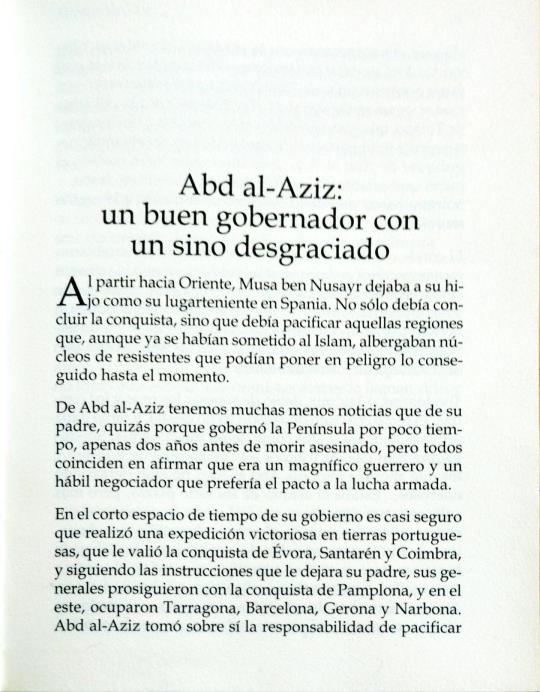
Abd al-Aziz: a good governor with an unfortunate fate
When leaving for the East, Musa ben Nusayr left his son as his liutenant in Spania. Not only he had to conclude the conquest, but had to pacify those regions that, although they had already submitted to Islam, housed groups of resisters who could put in danger what has been achieved so far.
We have much less news about Abd al-Aziz than about his father, perhaps because he ruled the Peninsula for a short time, just two years before being murdered, but they all agree that he was a magnificent warrior and a skilled negotiator who preferred pact to armed struggle.
In the short period of time of his government it is almost certain that he carried out a victorious expedition in Portuguese lands, which earned him the conquest of Évora, Santarém and Coimbra, and following the instructions that his father left him, his generals continued with the conquest of Pamplona, and in the east, they occupied Tarragona, Barcelona, Girona and Narbonne. Abd al-Aziz took upon himself the responsibility of pacifying

some rebellious areas of eastern Andalusia and the Levant. He owes himself the conquest of Málaga and Elvira and the advance on lands of Murcia, at that time in the hands of a Visigoth nobleman, Teodomiro, vassal of the kingdom of Toledo, who ruled the region as a practically independent prince. And here we can see the negotiating spirit of Abd al-Aziz, who knew take good advantage of the pact he established with Teodomiro, Tudmir in Arabic, and the name by which it will henceforth be known the Murcian region.
The Christian count and the Muslim governor engaged conversations in which the second offered the first the maintenance of all his prerogatives, as count and as Christian, as well as total respect for his subjects, in exchange for the recognition of vassalage, the payment of an annual tribute and the delivery of seven strongholds, a delivery that would be carried out immediately.
Teodomiro, or Tudmir, must have weighed the pros and cons. The Christian kingdom of Toledo no longer existed, and it made no difference to be a vassal of the Goths as well as the Muslims. Without a doubt, too paid tributes to Rodrigo's monarchy and those that now Abd al-Aziz imposed were not too onerous... There was the matter of the seven strogholds, but it was better to give in on something that lose everything. The document signed between Teodomiro and the Muslim leader, one of the few treatises of this type that have come down to us, and it specifies that everyone, the count and his vassals, will preserve their religion and their churches, will maintain their rights of sovereignty and will not be bothered at any time, neither in their lives, nor in their estates,

as long as they comply with what is stipulated. And what was stipulated was the delivery of Orihuela, Baltana, Alacant, Mula, Villena, Lorca and Ello. The annual tribute consisted of one dinar in cash, four bushels of wheat and four of barley, four measures of new wine, four of vinegar, two of honey and two of oil. This tax was reduced by half for the slaves.
If we have detailed the characteristics of this treaty, it is because of its rarity. and because, according to Levy Provençal, it is the first document diplomat of Muslim Spain.
Abd al-Aziz married the widow of King Don Rodrigo, at least that is what several historians say. It seems that they met after the fall of Mérida, when the royal widow left the city with another group of captives. Some consider this wedding as a real love story, at least on the part of Abd al-Aziz, since it seems that he did not take another wife. The Arab chroniclers call her Ailo and the Christians Egilona. Some say that her husband allowed her to keep her religion, gesture that was very well received among the Mozarabs, and others say that converted to Islam and was renamed Umm'Asim, “the mother of Asim", as soon as the only son she had with Abd al-Aziz was born.
The couple lived almost always in Seville, where it is still preserved, in the gardens of the Alcázar, a white tower of typical African construction, known as "the Tower of Abd al-Aziz". However, if they were happy, their happiness must have lasted little, because at the same time Seville, an envoy of the Caliph Sulayman, Ziyad ben Udhara, assassinated him in the church of Santa Rufina, converted into a mosque, while Abd al-

Aziz performed the pious duties of prayer. The charge against him, according to the caliph, was abuse of power. He was beheaded and his head was sent to Damascus.
A confusing time passed in Muslim Spain that was left without a governor. The Spanish Arabs decided that the son of a sister of Musa ben Nusayr would occupy the position until the one appointed by the caliph arrived.

The oddyssey of Prince Abd al-Rahman the Immigrant
After the violent death of Abd al-Aziz, the governors of the Muslims succeeded one another in Spain at an astonishing speed. Some barely held office for six months and It seems that only one of them lasted for about five years. They were difficult times in Muslim Spain. Had have deepen the conquest, quell the possible rebellions that could arise among groups of defeated and, also, and not less important was to make peace between the different Muslim factions, without dismissing the possibility of carrying out raids over lands of Gaul.
In the East, in turn, there was a complicated situation, such as result of the dissent of various religious groups that put the unity of Islam is endangered. Jarichis and Shiites conspired, already openly, against the Umayyad dynasty that reigned in those moments, without the caliphs having the strength or intelligence enough to face that situation that, each time, became more dangerous for them.

The flag of rebellion against the Umayyads was raised everywhere in the Muslim empire, awaiting the arrival of the "imam hidden" that was going to restore to Islam all the purity of its faith and all the splendor of its early days. The black flags, symbol of a new dynasty, the Abasid, were already flying in the Furasan and in the large Iraqi city of Cuta. Abu-l-Abbas Abd Allah proclaimed himself caliph, as a descendant of a first cousin of Muhammad and his son-in-law Ali. According to him, he was the imam that everyone expected and fought Marwan II, the last Umayyad caliph who would die with weapons in hand on July 7, 750.
The new Abbasid caliph, even before the death of Marwan, had already began the extermination of all the Umayyad princes who were left. They were persecuted to death, without mercy, and their bodies, as the maximum punishment, were left unburied. And for what no one would escape from that carnage that would cost its executioner the nickname "the bloodshed", resorted to a cruel stratagem. He proclaimed a false amnesty in which they trusted the relatives of the last caliph, which allowed, in one fell swoop, end the lives of about eighty people belonging to the Umayyad royal family, at Abu Futrus, near Jaffa, Palestine.
Only two Umayyads, grandsons of Caliph Abd al-Malik ben Marwan, distrusting the amnesty proclaimed by their enemy, managed escape from that horrible massacre. It was about the brothers Yahya ben Muawiya and Abd al-Rahman.
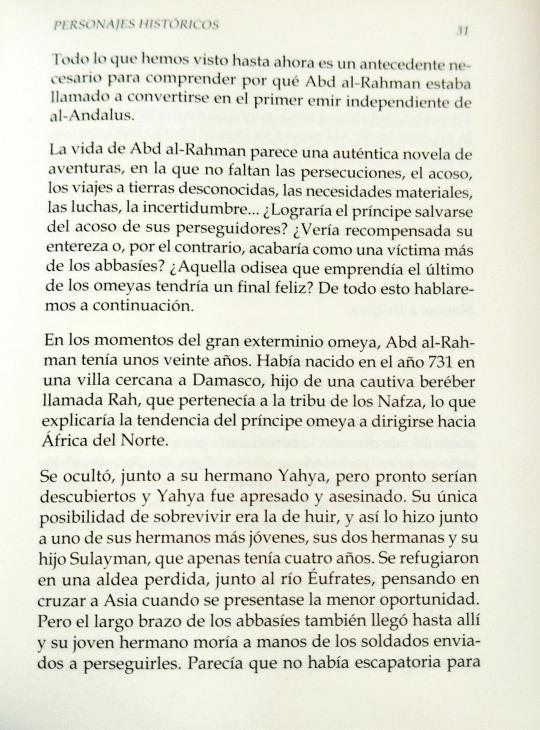
Everything we have seen so far is a necessary background to understand why Abd al-Rahman was called to become the first independent emir of al-Andalus.
The life of Abd al-Rahman seems like a real adventure novel, in which there is no shortage of persecutions, harassment, trips to unknown lands, the material needs, the struggles, the uncertainty...The prince would manage to save himself from the harassment of his pursuers? He would see his integrity rewarded or, on the contrary, would he end up as another victim of the Abbasids? That odyssey that would the last of the Umayyads undertake have a happy ending? From all of this We will talk next.
At the time of the great Umayyad extermination, Abd al-Rah-man had about twenty years. He was born in the year 731 in a town near Damascus, son of a Berber captive named Rah, who belonged to the Nafza tribe, which would explain the tendency of the Umayyad prince to head towards North Africa.
He hid, along with his brother Yahya, but they would soon be discovered and Yahya was captured and killed. His only chance to survive was to flee, and so he did with one of his younger brothers, his two sisters and his son Sulayman, who was barely four years old. They took refuge in a lost village, next to the Euphrates River, thinking about cross to Asia when the slightest opportunity presented itself. But the long arm of the Abbasids also reached there and his young brother died at the hands of the soldiers sent to pursue them. It seemed that there was no escape for

the Umayyad prince, when he saved himself by swimming across the Euphrates River.
But Abd al-Rahman was assigned a glorious destiny and protection of Allah he placed at his side the freedman Bard, a servant and counselor, who will accompany him throughout his life, even in the most difficult and who will maintain unlimited loyalty towards his lord, so unfortunate at that time. Bard managed to collect some wealth belonging to Abd al-Rahman and join him in Palestine. They undertook a long and dangerous journey across the Isthmus of Suez, trying to go unnoticed and rushing long and exhausting days, they arrived without problems at Ifriqiya.
This region was ruled by a Fhirid Arab who aspired to be appointed governor of Spain. He was a close relative of the Walí of al-Andalus. Some supporters of the Umayyads were refugees in Ifriqiya and, although the governor said he was opposed to the Abbasids, he thought that the change of dynasty would benefit him to make his territory an independent principality. Under this premise it is logical that Abd al-Rahman's arrival did not please him at all. Some friends warned the Umayyad prince of this situation and it was better not to trust the governor, so he decided to move away and try to enlist the support of the Berber tribes, to which his mother belonged, if they agreed to receive him. Everything was uncertainty and danger for the young prince.
Four years passed on these trips, always in search of support, of tranquility, of survival, while
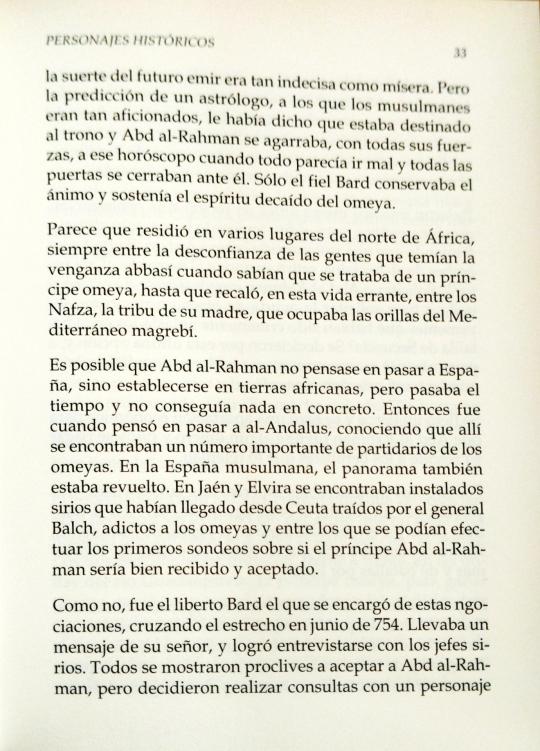
The fate of the future emnir was as indecisive as it was miserable. But the prediction of an astrologer, to whom the Muslims were so fans, had told him that he was destined for the throne and Abd al-Rahman clung, with all his strength, to that horoscope when everything seemed to be going wrong and all the doors were closing before him. Only the faithful Bard kept his spirits and sustained the fallen spirit of the Umayyad.
It seems that he lived in various places in North Africa, always between the distrust of the people who feared Abbasid revenge when they knew that he was an Umayyad prince, until he landed, in this wandering life, among the Nafza, his mother's tribe, who occupied the shores of the Mediterranean Maghreb.
It is possible that Abd al-Rahman did not think of going to Spain, but settle in African lands, but time passed and no achieved nothing in particular. That's when he thought about moving on to al-Andalus, knowing that there were a important number of supporters of the Umayyads. In Muslim Spain, the panorama was also mixed. In Jaén and Elvira they were installed Syrians who had arrived from Ceuta brought by the general Balch, addicted to the Umayyads and among whom the first polls on whether Prince Abd al-Rahman would be good received and accepted.
Of course, it was the freedman Bard who was in charge of these negotiations, crossing the strait in June 754. He carried a message from his lord, and managed to meet with the Syrian leaders. Everyone was willing to accept Abd al-Rahman, but decided to consult with a very important person

which was the most considered in al-Andalus. It was about the Qaysi chief, al-Sumayl, at that time governor of Zaragoza, who was defending the stroghold from the Berber siege and Kalbi Arabs. Once this coalition was defeated, al-Sumayl listened to the proposals of Bard and his companions and took his time to think about it.
Many months passed before receiving a reply, which was positive, but in the end, fearing the Abbasid reaction or fearing that an Umayyad restoration would take away freedom from the Arabs of al-Andalus, he withdrew his support for the project. What to do? Request Abd al-Rahman to desist from setting foot in Spain or request help from other groups such as the Yemenis who had been cruelly crushed in the battle of Secunda? They decided for this last option and, from this moment, with his help, the panorama was cleared for the Umayyad prince.
A boat was chartered and a financial contribution was made so that Abd al-Rahman had some money and could pay his ransom to the Berbers who held him.
Finally, after countless waits, after long trips, after untold deprivations, August 14, 755, Abd al-Rahman set foot on Hispanic soil in the port of Almuñécar. Now a new stage began, not exempt from problems and battles to fight.
The governor of al-Andalus was, at that time, Yusuf al-Fihrí, busy suppressing a rebellion by the Basques. He decided go to Córdoba leaving his son in charge of Zaragoza and the defense of Pamplona. However, he soon learned of defeat of his hosts and the arrival of the Uma-
#al andalus#al andalus history#al andalus. personajes históricos#al andalus. historical figures#book scans#bookblr#historyblr#abd al-aziz ibn musa#abd al rahman i#abd al rahman i of córdoba#abd al rahman i de córdoba#egilona#queen egilona#ailo#abd al-aziz#sorry for the cliffhanger
8 notes
·
View notes
Text
First of all, thank you for following the bookscans posts, I hope you're enjoying them. Now I wanted to share some extra facts related to the third part, like the Tudmir Pact and more about Abd al-Aziz and Egilona, so here we go:
• The Tudmir pact
The pact between Teodomiro and Abd al-Aziz was signed on April 5, 713 and its text is:
In the Name of Allah, the Gracious, the Merciful. Edict of 'Abd al-'Aziz ibn Musa ibn Nusair to Tudmir ibn Abdush [Theodomir, son of the Goths]. The latter obtains peace and receives the promise, under the guarantee of God and his prophet, that his situation and that of his people will not be altered; that his subjects will not be killed, nor taken prisoners, nor separated from their wives and children; that they will not be prevented from practicing their religion, and that their churches will not be burned or deprived of the objects of worship that are in them; all this as long as it satisfies the obligations we impose on it. Peace is granted with the delivery of the following cities: Uryula [Orihuela], Baltana, Laqant [Alacant], Mula, Villena, Lurqa [Lorca] and Ello. Furthermore, you must not give refuge to anyone who flees from us or is our enemy; nor cause harm to anyone who flees from us or is our enemy; nor cause harm to anyone who enjoys our amnesty; nor hide any information about our enemies that may come to their knowledge. He and his subjects will pay an annual tribute, each person, of one dinar in cash, four measures of wheat, barley, grape juice and vinegar, two of honey and two of olive oil; for the servants, only a measure. Given in the month of Rajab, year 94 of the Hegira [713]. As witnesses, 'Uthman ibn Abi 'Abda, Habib ibn Abi 'Ubaida, Idris ibn Maisara and Abu l-Qasim al-Mazali.
Various versions of the Pact of Tudmīr are known, all of them are not contemporary and it seems that the pact had an important impact, since there are manuscripts about It writen by some authors throughout the Middle Ages, the oldest by geographer Abu al-Abbás Áhmad ibn Úmar al-Uḏrī (Dalías, Almería, 1003- Almería or Valencia, 1085), those by Abū Ja'far Aḥmad ibn Yaḥyā ibn Aḥmad ibn 'Amirah al-Ḍabbī (Vélez-Rubio or Vélez-Blanco, Almería, 1155/1156- Murcia, 1203), Abu Hamid al-Garnāṭī (Granada, 1256-Cairo, 1344) and Ibn Abd-al-Múnim al-Ḥimyarī (Ceuta, 15th century- ?, 1495).
At the library of the Royal Monastery of San Lorenzo de El Escorial is preserved the manuscript of the al-Ḍabbī version of the pact (well, plus some annotations in Spanish from early 19th century) in his work Bughyat al-multamis fī tārīkh rijāl ahl al-Andalus (Wish fulfilled of the one who investigates, about the history of the men of al-Andalus), which is part of the Arabic manuscripts collection held at El Escorial (in the web you can find 153 digitalized manuscripts), started by Phillip II of Spain during the 16th century.
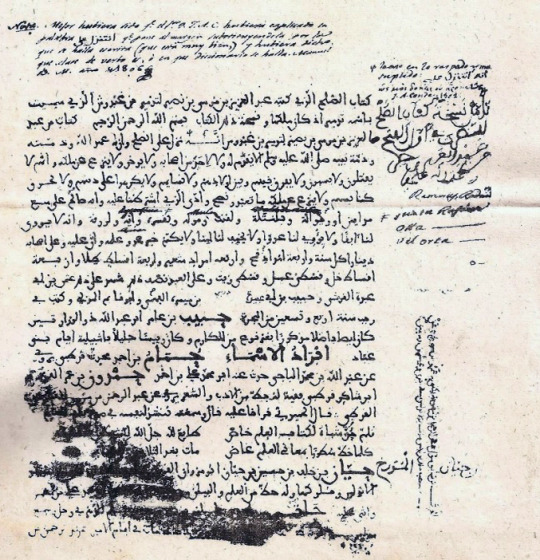
Btw this Arabic manuscript collection is the topic of one of the chapters of the book De Mayrit a Madrid (From Mayrit to Madrid), one of the books that is on the bookscans list, so if you want to know more about this topic, wait for when I share its bookscans.
And for ending with the Tudmir Pact, here's a map showing the cities included in the pact:

• Abd al-Aziz and Egilona
Note: The genealogical links listed below might not be 100% exact, because some data varies depending on the source. Sorry if it's a bit messy, genealogy is complicated (specially if Royal families are involved)
An interesting fact is that some sources point that Abd al-Aziz's mother was Umm bint Marwan ibn al-Hakam, a daughter of Caliph Marwan I, making Abd al-Aziz (born in 685) one of the grandsons of the 4th Umayyad Caliph of Damascus.
During the conquest, Abd al-Aziz and Egilona married in 713. Due to the name Umm'Asim Egilona is sometimes given, it's known that they had a son, although it's not known anything more about him, and they had a daughter too, Aïsha.

After the death of Musa ibn Nusayr in 715, Abd al-Aziz started to mistrust the new Caliph Suleyman, as its possible that the Caliph ordered to murder Musa.
The relationship between the Caliph and Abd al-Aziz was tense, since Abd al-Aziz's title of governor of Al Andalus was given by his father Musa ibn Nusayr, not by the Caliph, so Sulayman was afraid of a possible uprising and Abd al-Aziz turning Al Andalus into an independent territory. As it is possible that Egilona suggested Abd al-Aziz to crown himself and turn away from the caliphate, or at least that were the rumours, and that alleged conspiracy led to Sulayman sending Ziyad ibn Udhara to murder Abd al-Aziz in Seville in 716.
It is not known exactly when Egilona died, although is likely the year of her death is after 718. About their daughter Aïsha bint Abd al-Aziz, she eventually married Fortún ibn Qasi, governor of Zaragoza and the Ebro valley and head of the Banu Qasi, and had two sons Zahir and Musa ibn Fortun, the later married Oneka of Pamplona. They had two sons, Mutarrif and Musa ibn Musa, whom later in the book AL ANDALUS. Historical figures there will be a chapter about (the chapter Musa ben Musa ben Qasi, the third King of Spain). Musa ibn Musa's domains were occasionally independent from the Umayyad emirate of Córdoba since he and his descendants allied with either the emirate or with Christians like the future kingdom of Navarre, whose Royal family had blood ties with the Banu Qasi, some of them being:
- Eneko Aritza, Lord "King" of Pamplona, was Musa ibn Musa's brother, since Eneko was the son Oneka had with her first husband Eneko Semenoitz
- Asona Enekoitz, one of the daughters of Eneko Aritza, niece and wife of Musa ibn Musa. Their children were Lubb ibn Musa, Mutarrif ibn Musa, Fortún ibn Musa and Awriya bint Musa
- Belasquita Garcés of Pamplona, daughter of Eneko Aritza's son, García. She was Musa ibn Musa's daughter-in-law since he married Mutarrif ibn Musa ibn Musa.
- Fortún Garcés, son of Eneko Aritza's son García. Fortun married Awriya bint Lubb ibn Musa, daughter of Lubb ibn Musa and an Arab noblewoman Ayab al-Bilatiyya. Their children were Eneko, Aznar, Belasko, Lope and Oneka.
- Oneka Fortúnez, daughter of Fortún Garcés and Auria/Awriya bint Lubb. Oneka Fortúnez married twice, she firstly wed the Emir Abd Allah I of Córdoba, she was known as Durr (Pearl), their children being Muhammad, Zayd, al-Baha' and Fatima, Muhammad's son was the first Caliph of Córdoba, Abd al-Rahman III; then Oneka married her cousin Aznar Sánchez.
Descendants by MUHAMMAD
- Muhammad, son of Emir Abd Allah I of Córdoba and Oneka Fortúnez, he had Abd al-Rahman III with a Basque woman, Muzna.
- Abd al-Rahman III, 8th Emir and first Caliph of Córdoba. He had several wifes and concubines, and many children, but the one who succeeded him was al-Hakam II, one of the sons he had with one of his wifes, a Christian captive called Maryam.
- Al-Hakam II, 2nd Caliph of Córdoba, son of Abd al-Rahman III and Maryam. Al-Hakam was succeeded by Hisham II, a son he had with the concubine, Subh al-baskunsiyya, a Basque woman named Aurora, but then she took the name Subh.
- Hisham II, 3th Caliph of Córdoba, son of al-Hakam II of Córdoba and Subh. He firstly was overthrown by Muhammad II, and became Caliph again after the second rule of Muhammad ended.
-Muhammad II, 4th Caliph of Córdoba, son of Hisham, who was son of Abd al-Yabbar, one of Abd al-Rahman III's sons. He overthrew Hisham II, but Muhammad II was overthrown by Suleyman al-Mustaín, and Muhammad II started his second rule after he overthrew Suleyman. Muhammad II's sons were Abd al-Rahman IV and Hisham III.
- Suleyman, 5th Caliph of Córdoba, son al- Hakam, who was son of Suleyman, one of Abd al-Rahman III's sons. After Hisham II died, Suleyman's second rule started, but he was defeated and killed by the governor of Ceuta, Alí ibn Hamud al-Násir, who became the 6th Caliph of Córdoba and first Caliph of the Banu Hamud dinasty.
- Abd al-Rahman IV, 7th Caliph of Córdoba, son of Muhammad II. After Ali ibn Hamud was murdered, he was proclaimed Caliph, although it was después with Ali ibn Hamud's brother Al-Qásim, and after Abd al-Rahman IV died, Al-Qásim fully became the 8th Caliph of Córdoba.
- Abd al-Rahman V, 10th Caliph of Córdoba, brother of Muhammad II. After the second rule of Al-Cásim ended, he became Caliph, but he was murdered a year later. He was succeeded by his cousin Muhammad III.
- Muhammad III, 11th Caliph of Córdoba, son of Abd al-Rahman, who was son of Ubayd Al-lah, one of Abd al-Rahman III's sons. He had a daughter with the slave Amin'am, who was Wallada bint al-Mustakfi. Muhammad died, and Ali ibn Hamud's son, Yahya al-Muhtal returned.
- Hisham III, 12th Caliph of Córdoba, son of Muhammad II. He became Caliph when Yahya al-Muhtal was overthrown and his second rule ended. After some years, Hisham III was overthrown during a popular uprising, the Caliphate of Córdoba was abolished, so Hisham was the last Caliph of Córdoba, and the first period of Taifas began.
- Wallada bint al-Mustafki, the only child of Muhammad III, became a famous poetress. Wallada inherited her father's assets when he died and she opened her palace to the education of women from good families to women of low status and even slaves; poets and writers also attended. Among her students, Muhya bint al-Tayyani stands out, a poetress of very humble status. Wallada welcomed her into her palace, and it is said that they were lovers.
It is known that she embroidered her verses on her dresses, being the most well-known: "By Allah, I deserve any greatness/ and I proudly continue my path/ I gladly give my lover my cheek / and I give my kisses to whoever wants them"; and she did not veil on the street. Wallada participate in men's competitions, in one of them she met the poet Ibn Zaydún, with whom she had a passionate love story, as is it shown in several of their poems. Wallada had other lovers like Ibn Abdus, but she never married.
(Mental Note: I have to dedicate a post to Wallada's poetry someday)
Descendants by AZNÁR SANCHEZ
- Toda Aznárez, daughter of Oneka Fortúnez with her second husband Aznar Sánchez. Toda married Sancho I of Pamplona, a distant cousin and first official King of Pamplona. Their children were García I of Pamplona (married Countess Andregoto I of Aragon, their son was Sancho II of Pamplona), Urraca (married Ramiro II of Leon), Oneka (married Alfonso IV of León, their son was Ordoño IV), Sancha (married Ordoño II of León, their son was Sancho I) , Belasquita and Orbita (married al-Tawil, governor of Huesca).
- Sancho II of Pamplona, García I and Andregoto's son, married Urraca Fernández, daughter of Fernán González, Count of Castile. Among their children were García II of Pamplona and Urraca. Urraca married Al-Mansur, hayib of Caliph Hisham II of Córdoba, and she took the name Abda, and was the mother of Abd al-Rahman Sanŷul (or Sanchuelo), who became hayib of Hisham II after his brother ʿAbd al-Málik al-Muẓáffar (son of Al-Mansur and Al-Dalfāʾ) died. Abd al-Rahman Sanchuelo had a son, Abd al-Aziz ibn Ámir, who, after the of the Caliphate was splitted into Taifas, became Emir of the Taifa of Valencia. Abd al-Aziz was succeeded by his son Abd-al-Malik, but Abd-al-Malik was overthrown by Al-Mamún, Emir of the Taifa of Toledo.
- García II of Pamplona was succeeded by his son Sancho II of Pamplona, who married Muniadona of Castile, and they were parents of García III of Pamplona (ancestors of the Kingdom of Navarre) and Ferdinand I of Leon, who married Sancha of Leon, who was the great-great-grandaughter of Ramiro II of Leon (ancestors of the Crown of Castile and the Kingdom of Portugal, via their son Alfonso VI of Leon). Plus Sancho II of Pamplona had a son out of wedlock, Ramiro I of Aragon (ancestors of the Crown of Aragon)
#al andalus#historyblr#pact of tudmir#al andalus. historical figures#al andalus. personajes históricos#abd al-aziz ibn musa#abd al-aziz#teodomiro#tudmir#spanish history#al andalus history#book scans related#book scans#bookblr#egilona#ailo#queen egilona#umm'asim
6 notes
·
View notes
Text
As I promised, let's start with the bookscans:
Al-ANDALUS. PERSONAJES HISTÓRICOS
(Al Andalus. Historical figures)
Concepción Masiá
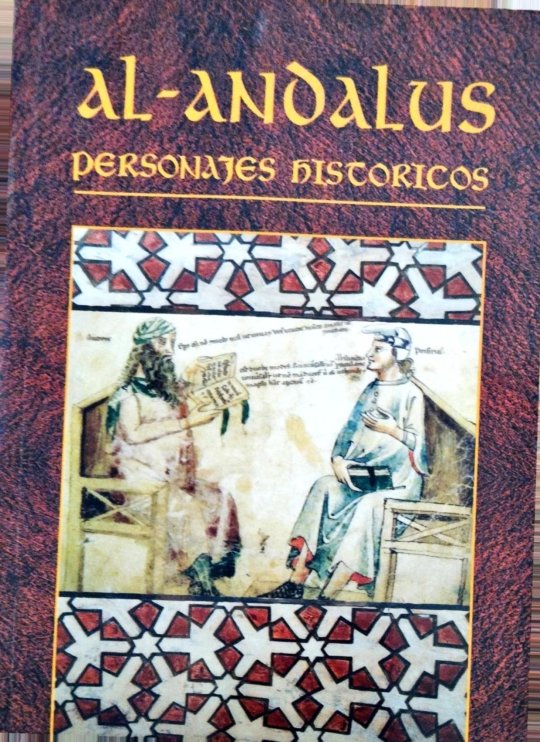
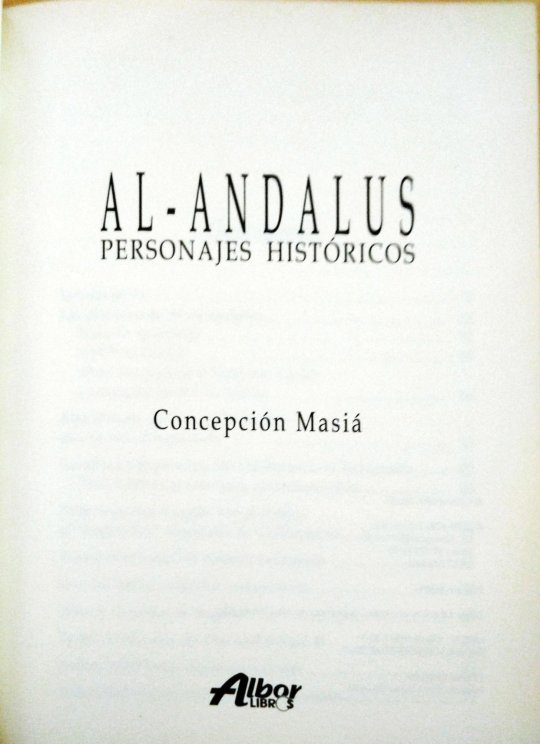

Summary
Introduction.................................. 9
The precursors of al-Andalus.....13
Count Don Julián....................13
Tarif ben Malluk. ....................15
Musa ben Nusayr and Tariq ben Ziyad: the conquerors of Spania...........16
Abd al-Aziz: a good governor with an unfortunate fate ..........................25
The Odyssey of Prince Abd al-Rahman the Immigrant......................................29
Abd al-Rahman was only twenty-five years old.........................................36
Sulayman ben Yaqzan ben al-Arabi: Charlemagne's deceived "deceiver" ........................... ...........41
Amrus ben Yusuf: the muladí of Huesca
.............................................................47
The “rabadies”: adventurous spirits.. ..............................................53
Ziryab: the singer of Baghdad........61 Tarub: the favorite of Abd al-Rahman II...............,...........................................67 Abbas ben Firnas: the first aviator............................ ......................73 Yahya ben Hakan al-Bakri: the miserly poet.....................................................77

Abd al Chabbar and Sulayman ben Martin: the rebels of Mérida..........................81 Eulogio and Álvaro de Córdoba: pursuing martyrdom..........................85 The Andalusian Vikings..................... 95 The emir Abd Allah distrust and death...............................….................... 101 Musa ben Musa ben Qasi: the third king of Spain.......................................................107 Ibn Hafsun: the unredeemed rebel.....115 Abu Alí al-Sarrach: the Andalusian missionary. ...........................................125 Ibn Masarra: a freethinker in Spanish Islam.......,...........,...................................131 Abd al-Rahman III: the first independent caliph of al-Andalus. ...........,................................137 Hasday ibn Shaprut: the Jewish doctor of Abd al-Rahman III............ ....... ...................... ................... 145 Andalusians in France: the “Moorish kingdom” of Fraxinetum....................... 151 Rabbi ben Zayd: Bishop Recemundo............................................. 157 Al-Hakam al-Mustansir bi-llah: passion for culture.................................. 161
Ibn Abd Rabbhi, the encyclopedist, and Ibn Futais, the collector.................. 167 Al-Mansur “the Victorious” ...................171 Hisham II and Sanchuelo: misrule. .......191
Abu Muhammad Ali ibn Hazm: The pigeon neackle................................209
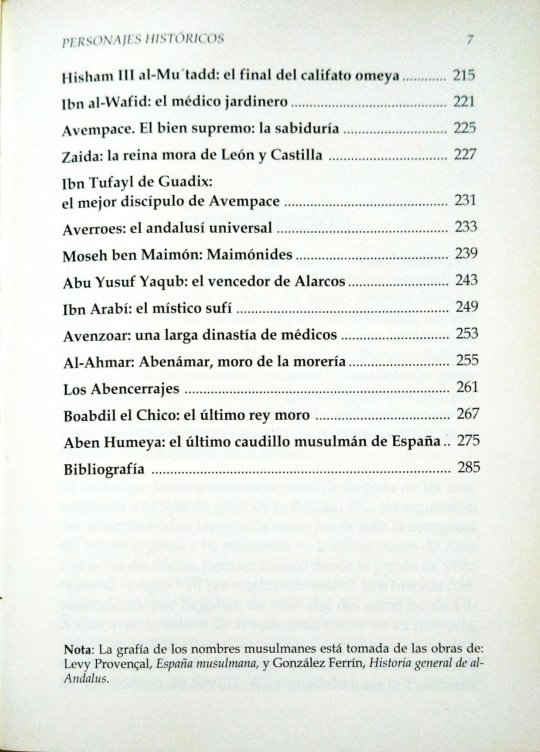
Hisham III al-Mu'tadd: the end of the Umayyad caliphate...............................215
Ibn al-Wafid: the gardener doctor.....221
Avempace. The supreme good: wisdom...................................................225
Zaida: the Moorish Queen of Leon and Castile........................................................227
Ibn Tufayl of Guadix: the best disciple of Avempace................. ............................ .231 Averroes: the universal Andalusian....233 Moseh ben Maimon: Maimonides..... ..239 Abu Yusuf Yaqub: the winner of Alarcos......................................................243 Ibn Arabi: the Sufi mystic.....................249 Avenzoar: a long dynasty of doctors. ...................................................253 Al-Ahmar: Abenámar, Moor of the Morería. ...,...............................................255 The Abencerrajes. ..................................261 Boabdil the Younger: the last Moorish king ............................................................267 Aben Humeya: the last Muslim leader of Spain................ ..........................................275 Bibliography .............................................285
Note: The spelling of Muslim names is taken from the works of: Levy Provençal, Muslim Spain, and González Ferrín, General History of al-Andalus.

Introduction
In the long eight hundred years that the Muslims remained in Spain, there were many personalities who, in all the fields of knowledge, sciences, letters and arts, stood out unequivocal, marking a milestone not only in the culture of al-Andalus, but that had a relevant character in universal culture.
On the other hand, the almost constant struggle between Christians and Muslims would also generate a whole series of great warriors who, for example, the infante Don Juan Manuel considered the best gifted for the war of all those who existed in the East and the West of their time.
The date that we all know as the arrival of the Muslims to Gothic Spania dates back to the year 711. Its expansion throughout the territory was so rapid as had been the conquest of the Persian empire and its presencein large areas of Asia or North Africa, but from a cultural point of view, the 8th century was totally sterile. The new conquerors who arrived from beyond the Strait of Gibraltar, were men at arms, mostly illiterate, who could do little contribute to a Christian Spania whose culture continued to develop under the dictates of the wisdom of Saint Isidore of Seville. Still they were left on the Peninsula
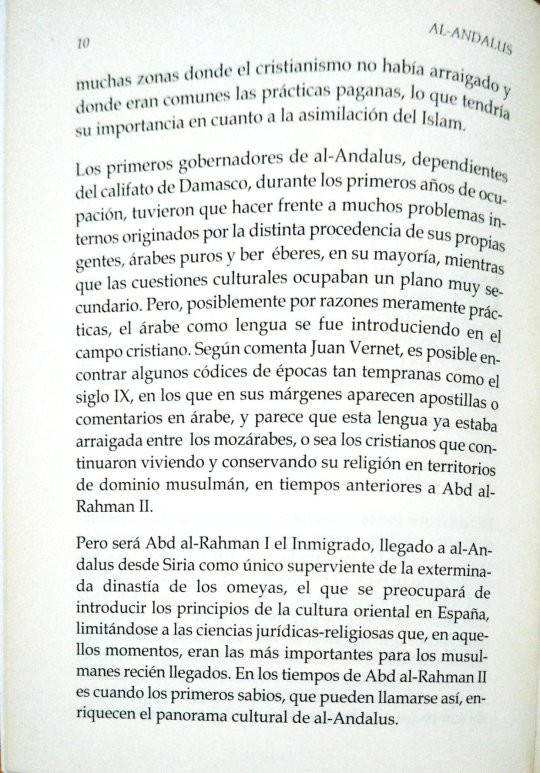
many areas where Christianity had not taken root and its importance regarding the assimilation of Islam.
The first governors of al-Andalus, dependent on Caliphate of Damascus, during the first years of occupation had to face many enormous internal problems, originated by the different origins of their own people, Arabs and berebers, mostly, while cultural issues occupied a very secondary level. But, possibly for purely practical reasons, Arabic as a language was introduced into the Christian field. According to Juan Vernet, it is possible to find some codices from times as early as the 9th century, that in its margins appear apostilles or comments in Arabic, and it seems that this language was already rooted among the Mozarabs, that is, the Christians who continued to live and preserve their religion in Muslim-dominated territories, in times before Abd al-Rahman II.
But it will be Abd al-Rahman I the Immigrant, who arrived in al-Andalus from Syria as the only survivor of the exterminated Umayyad dynasty, the one who will be concerned with introducing the principles of oriental culture in Spain, limiting itself to the legal-religious sciences that, in those moments, were the most important for the newly Muslims arrived. It was during the time of Abd al-Rahman II that the first wise men, who can be called that, enrich the cultural landscape of al-Andalus.

Poets, doctors, philosophers, mathematicians, geographers, undefeated generals...All of them will give al-Andalus and Europe a series of works that, by their importance will be translated, searched, accepted and will serve as a basis for the western culture and Renaissance ideas, in such a way that many of the great sages of the Italian Renaissance considered that all knowledge of the time came from Muslim Spain, which all the wise men were of Andalusian origin. And when the political decline and the disintegration of the caliphate, will not stop birth, grow and develop distinguished minds that will continue to maintain,for a long time, the prestige of al-Andalus. Curiously, this situation will be repeated throughout the history of Spain, when the Arab occupation just be a memory. The Spanish Golden Age will coincide with decadence of the Austrias, when the country loses its pre-ponderance in Europe, and with the disaster of '98, with the loss for Spain of its last colonies, will produce a cultural and scientific renaissance that has been called the Silver age.
Through the pages of this book we want to highlight those figures who occupied a predominant place in the history of al-Andalus, although not all of them were necessarily Muslims, since that in that cultured and tolerant al-Andalus, many Jews and some other Christians showed their genius, and of those who, often, we know more about his works than about his biography. But whatever religion they had, they were all, after all, Andalusians, born and raised in the extensive lands of al-Andalus. As a matter of curiosity we will include some groups of characters anonymous people who, due to their surprising
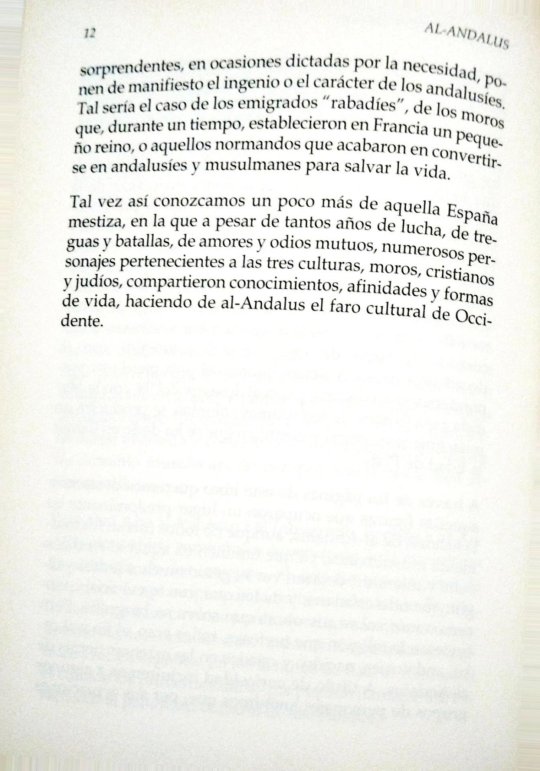
actions, on occasions dictated by necessity, they reveal the ingenuity or character of the Andalusians. Such would be the case of the "rabadíes", of the Moors who, for a time, established a small kingdom in France, or those Normans who ended up becoming Andalusians and Muslims to save their lives.
Perhaps this way we will learn a little more about that crossbred Spain, in which despite so many years of struggle, truces and battles, mutual loves and hates, numerous characters belonging to the three cultures, Moors, Christians and Jews shared knowledge, affinities and forms of life, making al-Andalus the cultural beacon of the West.

The precursors of al-Andalus
Count Don Julián
The conquest of Morocco had been carried out quickly, but shallow. The Berbers were only subdued after a fierce resistance, defeated by an ambitious general who had just been appointed governor of Ifriqiya and Maghrib. His successes in these lands They would prepare the ground for him to be the one to set his eyes and, also his troops, over Gothic Spania. It was Musa ben Nusayr. Musa, with the help of one of his sons, took possession of Tangier, and demanded that the subjugated tribes hostage to educate them in the new faith, which in turn, became propagandists of Islam, leaving in the conquered Morocco Arab lieutenants, including General Tariq ben Ziyad, he turned to Ifriqiya. But it seems that the Ceuta square remained in the hands of a Christian, the so-called Count Don Julián, who would have a determining role in this entire story. We could consider it as a precursor of that al-Andalus that was about to be born.
#bookblr#book scans#historyblr#history books#al andalus#al andalus. personajes históricos#al andalus. historical figures#history#spanish history#musa ibn nusayr#tariq ibn ziyad#conde don julián#count don julián#count julian
31 notes
·
View notes
Text
Characters of the Banu Qasi triology (+ some familiy trees of the Banu Qasi, the emirs and khalifas of Cordoba, the Arista & Jimena dinasties and the Asturian/Leonese kings)
Banu Qasi-Arista Familiy trees from the books:
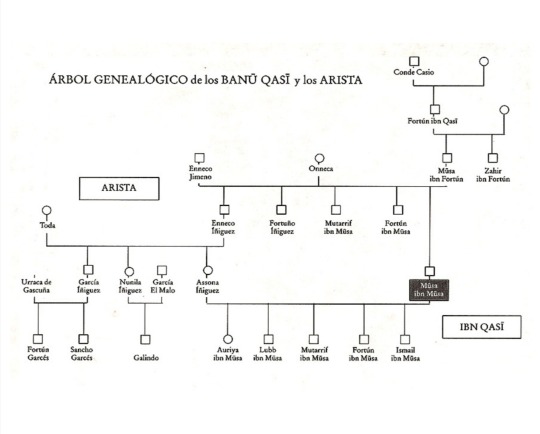
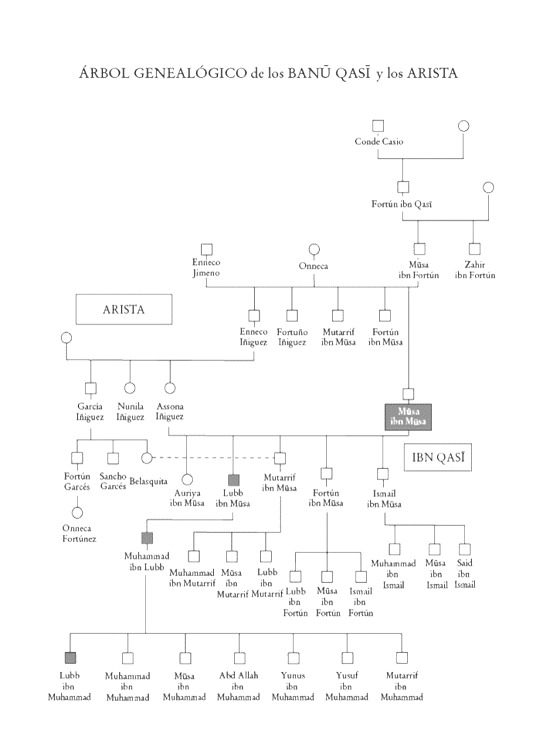
Arista-Jimena & Benu Qasi dinasties family trees I found on Internet:
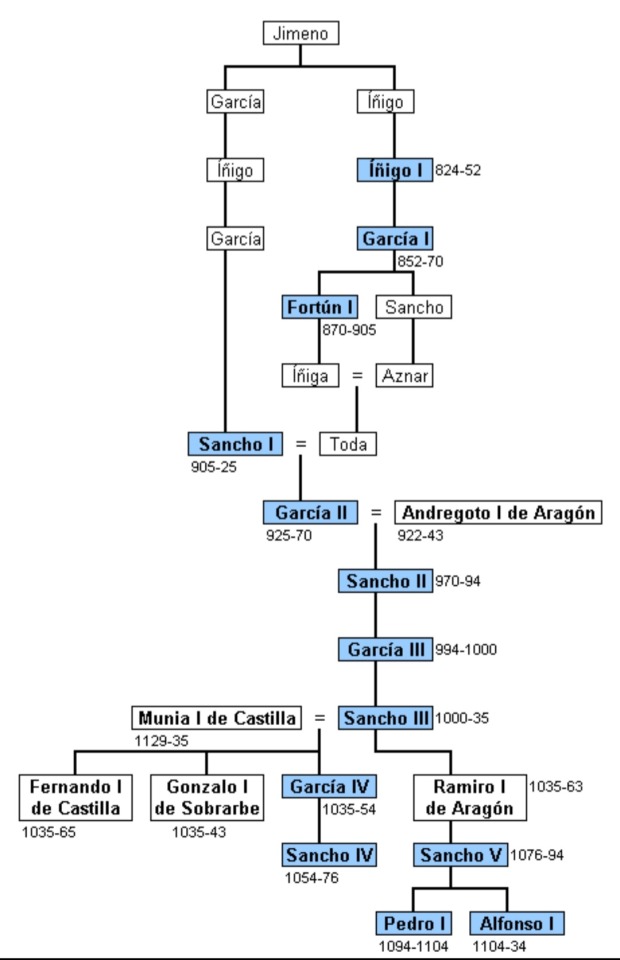
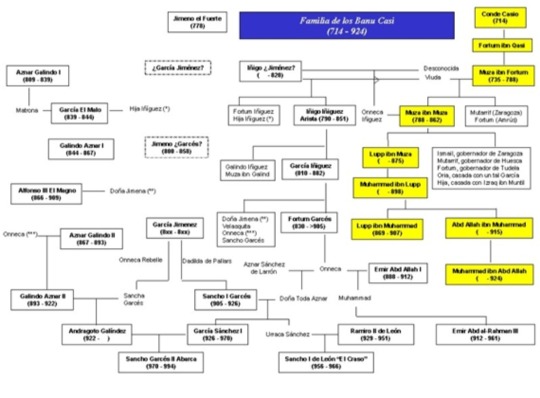
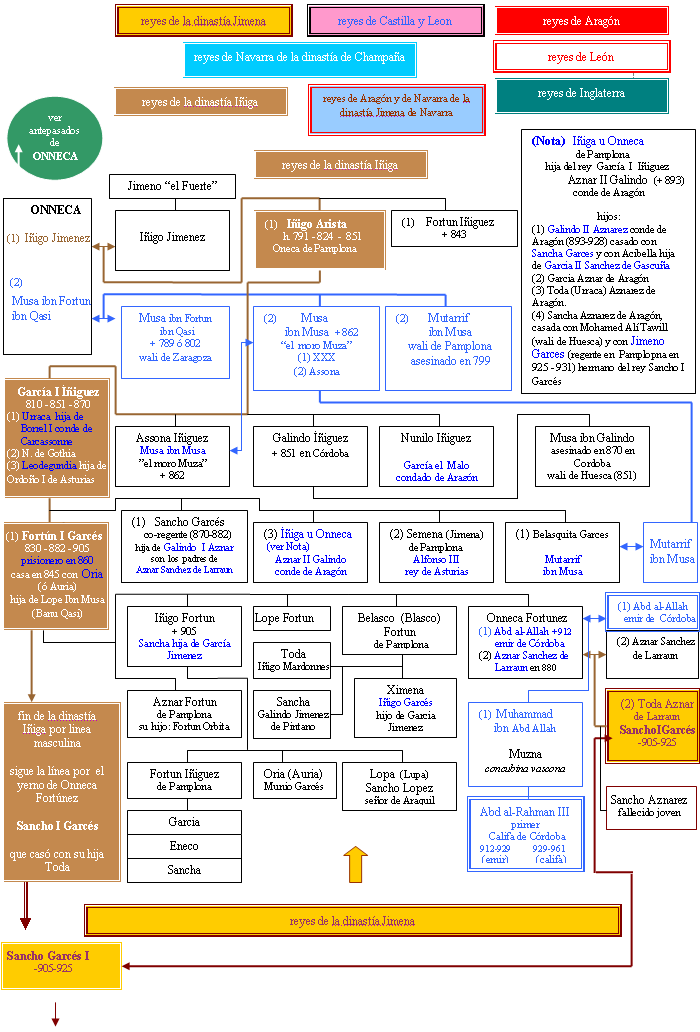
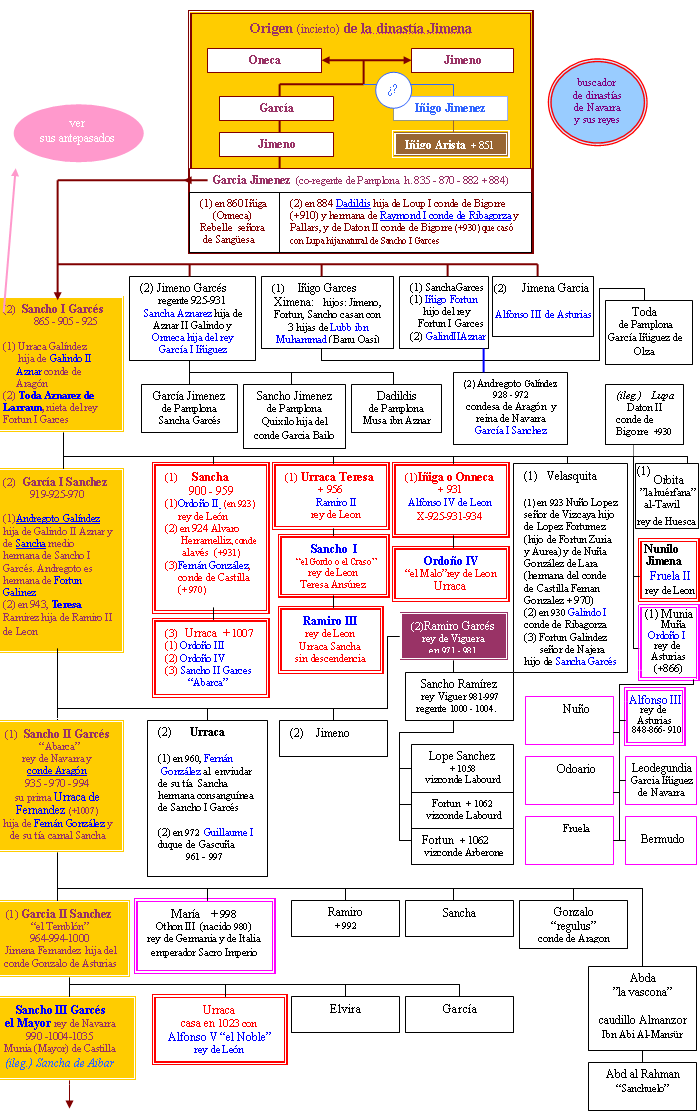
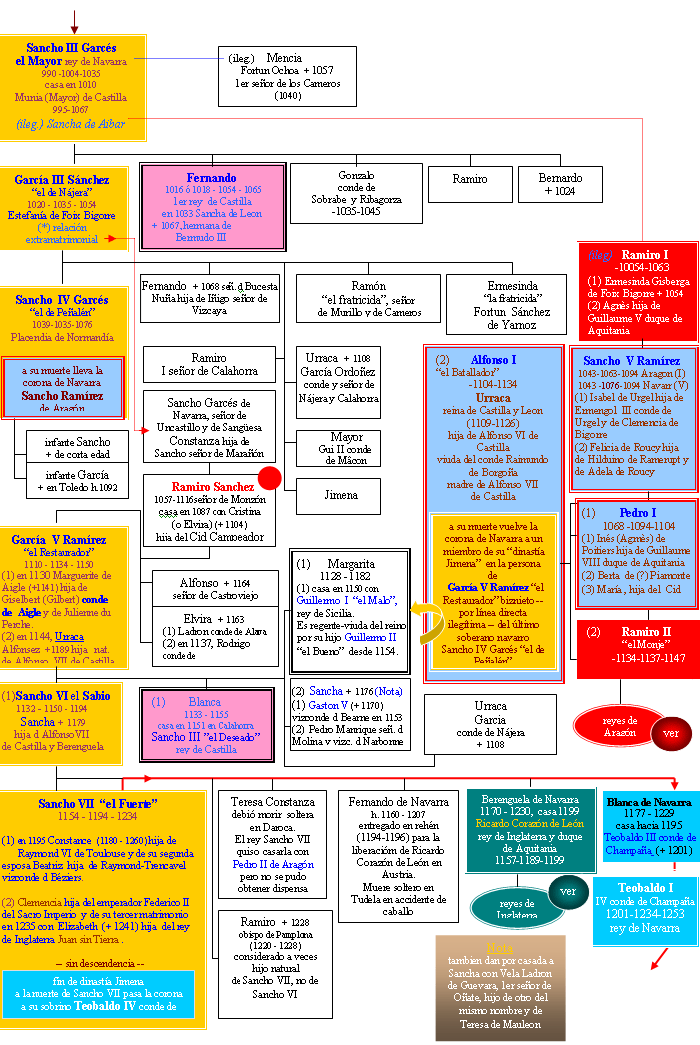
The Asturian-Leonese kings:
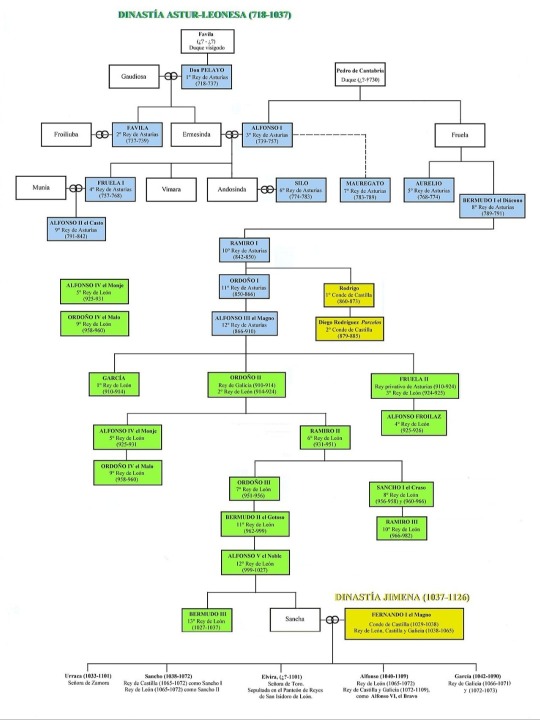
The Umayyad emirs and khalifas of Cordoba (the first ones are the Umayyads from Damascus, the Umayyads from Cordoba start with Abd al Rahman I):
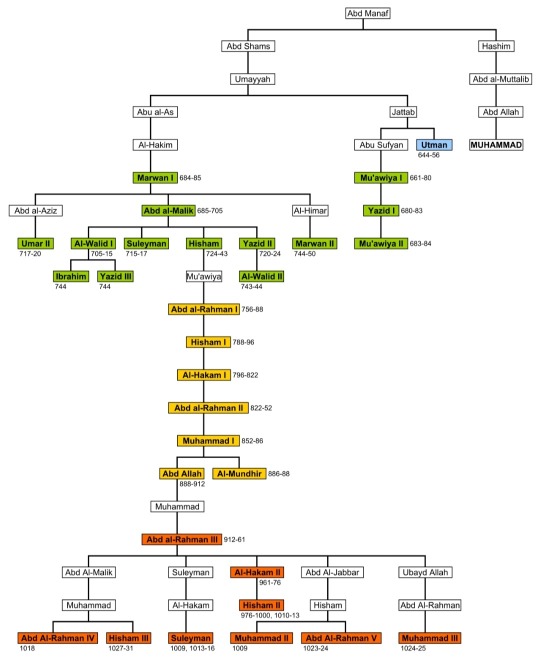
Abulfath Nasr: Eunuch who achieved great influence and power in the court of Abd al Rahman II.
Abd al Karim ibn Mugit: Hayib of Al Hakam I, a prestigious general and trusted man of the emir.
Abban ibn Abd Allah: Son of the emir Abd Allah
Abbas ibn Abd al Aziz: Cordovan General.
Abbas ibn Abd al Barr: Governor of Huesca
Abd al Aziz al Tuchibí: Patriarch of the Tuchibíes
Abd al Aziz: Male son of the emir Abd al Rahman III and his wife Maryam.
Abd al Malik: Eldest son of Al Tawil.
Abd al Rahman I: First Emir of Córdoba (756-788), granson of the khalifa Hisham of Damascus. He was the only survivor of the slaughter of the Umayyads of Damascus carried out by the Abbasids and their supporters. The Abbasids established their caliphate in Baghdad, and Abd al Rahman fled to Al Ándalus and established an independent emirate from Baghdad, the emirate of Cordoba.
Abd al Rahman ibn Marwan: Rebel of the heart of Merida
Abd al Rahman ibn Badr: Son of the hachib Badr ibn Ahmad.
Abd al Rahman ibn Ibrahim ibn Hayay: Son of Ibrahim ibn Hayay, little king of Ishbiliya.
Abd al Rahman ibn Umar: Son of Umar ibn Hafsun.
Abd al Rahman II: Fourth Emir of Córdoba (822-852).
Abd al Rahman III: Eighth emir of Córdoba, son of Muhammad ibn Abd Allah. He succeeded his grandfather after his father's death.
Abd Allah ibn Kulayb: General and Governor with Abd al Rahman II
Abd Allah ibn Yahya: Governor of Zaragoza with Muhammad I
Abd Allah ibn Muhammad: Seventh Emir of Córdoba (888-912), husband of Onneca and father of Muhammad.
Abd Allah ibn Muhammad: Second son of Muhammad ibn Lubb, leader of the Banū Qasī since 907.
Abd Allah ibn Hayay: Arab rebel from Seville
Abd Allah ibn Khalaf: Vali of Barbastro and father-in-law of Ismail ibn Musa
Abd Allah ibn Abd al Rahman: Brother of the emir Hisham I, who fought against him together with Sulayman, the eldest son.
Abd al Walid al Iskandaraní: General of the emir Abd al Rahman II.
Abú Marwám: Second son of the emir Abd al Rahman and Maryam.
Abdel: Fictional character. Slave of Fortún and Onneca in Córdoba
Abu Marwan: Alfaquí from Cordoba
Abu Nasr: Famous archer in the ranks of Ibn Hafsun.
Abu Umayya: One of the sons of the emir Abd Allah.
Abū Yazīd: Chief of the Zenetas tribe.
Adosinda: First wife of Ramiro de León.
Adur: Fictional character. Muzna's brother and thus Abd al Rahman III's uncle.
Adur ibn Badr: Fictional character. Assumed name of the second son of the hachib Badr ibn Ahmad.
Ahmed ibn Qasi: Fictional character. Zahir's relative who lives in Zaragoza.
Ahmad ar-Razi: Cordovan poet.
Ahmad ibn Abd Rabbih: Cordovan poet
Ahmad Al-Barra: Governor of Zaragoza and the Upper March
Ahmad ibn Baqi: Qadi of Qurtuba.
Ahmad ibn Maslama: Sevillian leader, opposed to Ibn Hayay.
Ahmad ibn Muhammad: Brother of the emir Abd Allah.
Ahmad ibn Muhammad ibn Hudayr: Vizier of Abd al Rahman III.
Al Anqar: Mujahid al Tuchibi, Governor of Saraqusta.
Aishun: Chieftain of Archidona
Afrah: fictional character. Concubine in the palace of the governor of Zaragoza
Al Abli: Muladi Poet from Granada
Al Anqar: The One Eyed. Tuchibi Governor of Zaragoza during the siege of the city. Muhammad ibn Abd Allah al Tuchibi (although in the novel he is known as Mujahid to avoid the constant repetition of the same name)
Al Asadí: Arabic poet from Granada
Aisha: Supposed daughter of Fortún, although some sources consider her the daughter of Musa
Al Hakam I: Third Emir of Córdoba (796-822).
Al Harraní: Famous Cordovan doctor in the court of Abd al Rahman II.
Al Mahdi: Ubayd Allah al Mahdi, first Fatimid caliph (909-934).
Al Mundhir: Sixth Emir of Córdoba (886-888).
Al Sarray: Muslim holy man opposed to the power of the emir
Al Tawil: Nickname of Muhammad ibn Abd al Malik, governor of Huesca.
Al Walid ibn Al Hakam: Brother of the emir Abd al Rahman II.
Alfonso Froilaz: Son of Fruela II of León.
Alfonso II: King of Asturias (791-842)
Alfonso III: King of Asturias (866-910). Known as Alfuns among Muslims.
Alfonso IV: Alfonso Ordóñez, King of León.
Almugirah ibn Al Hakam: Brother of the emir Abd al Rahman II.
Álvaro Herrameliz: Count of Álava.
Álvaro de Córdoba: Cordovan monk, friend and biographer of Eulogio de Córdoba.
Amrus ibn Kulayb: General of Abd al Rahman II, brother of Abd Allah ibn Kulayb
Amrus ibn Umar: Muladí who seized power in Huesca
Amrus ibn Yusuf: General of Huesca muladí origin, governor of Talavera, later of Toledo, and later of the Upper Marca. He fortified Tudela in 802, and for this reason he is considered the founder of the city.
Andregoto: Daughter of Galindo Aznar and Sancha Garcés.
Aragonta: Second wife of Ordoño II of León.
Argentea: Daughter of Sulayman ibn Umar.
Aslam ibn Abd al Aziz: First qadi of Abd al Rahman III.
Asbag ibn Isa: Cordovan strategist in the battle of Bulay
Assona Iñiguez: Daughter of Iñigo Arista and Wife of Musa ibn Musa
Auriya ibn Musa: Eldest daughter of Musa ibn Musa. The Arabic name corresponds to the Oria of the Christian chronicles.
Ajab: fictional character. Former slave of Córdoba, wife of Lubb ibn Musa
Ayyub ibn Umar: Firstborn of Umar ibn Hafsun.
Aznar Galindo: Aragonese count faced with the Basques and the Banu Qasi.
Aznar Fortúnez: Son of Fortún Garcés
Aznar Sánchez de Larraón: Son of Sancho Garcés, husband of Onneca Fortúnez, father of Toda Aznárez.
Azzam: Fictional character. Andalusian fisherman, supporter of Ibn Hafsun.
Badr: fictional character. Eunuch of the harem of Abd Allah, died in 891.
Bahlul ibn Marzuq: Huesca rebel faced with the Banu Salama who came to take control of Zaragoza in 799
Banu Anyalin: Family of Sevillian muladíes
Banu Sabariquh: Family of Sevillian muladíes
Bashir: fictional character. One of Umar ibn Hafsun's administrators.
Badr ibn Ahmad: Hachib and trusted man of the emirs Abd Allah and Abd al Rahman III.
Basilio: Bishop of Pamplona.
Bastán: Cordovan Governor of Úbeda, owner of a famous sword that will bear his name.
Belasco Fortúnez: Son of Fortún Garcés
Belasquita Sánchez: Daughter of Sancho Garcés I and Toda Aznárez.
Balask al Yalaski: Velasco el Gascón, a character from Pamplona who was a supporter of Carolingian rule, who will intervene in the life of the city for decades.
Charlemagne: King of the Franks (768-814) who went to Zaragoza in 778. On his return, after destroying Pamplona, the rear of his army was decimated in the battle of Roncesvalles. Creator of the Hispanic March, in the year 800 he had himself crowned emperor by Pope Leo III
Céntulo Aznárez: Son of Count Aznar Galindo
Columba: Wife of Sulayman ibn Umar, mother of Argentea.
Count Casio: Visigothic count who dominated the lands of the Ebro upon the arrival of the Muslims in 711. He adopted the faith of the conquerors and became the mawla of the caliph of Damascus, thus preserving his rights and the government of his lands. His descendants, the Banū Qasī, would maintain this power for generations.
Count Eblo: Count of Gascony, sent by Ludovico against Pamplona
Count Gastón: Brother of Ordoño I, general of the Christian army.
Dadildis de Pallars: Mother of Sancho Garcés I.
Diego de Salazar: Fictional character. Pamplona gentleman.
Diego Rodríguez: Count at the service of Alfonso III, one of the officers of his hosts.
Dulce: Cordovan martyr.
Dulcidio: Leonese cleric, ambassador in the Cordovan court.
Damian: Fictional character. Mozarabic collaborator from Huesca who helps Belasquita.
Elvira: First wife of Ordoño II.
Elvira: fictional character. One of Burbaster's hermit nuns.
Enneco Fortúnez: First son of Fortún Garcés.
Enneco Garcés: Regent of Pamplona until the death of Fortún Garcés in 905.
Enneco Iñiguez: known as Iñigo Arista, the first king of Pamplona, blood brother of Musa ibn Musa
Enneco Jimeno: Basque leader, Onneca's first husband, father of Enneco Arista and Fortuño
Eulogio de Córdoba: Religious from Córdoba, promoter of the Mozarabic response to the emir.
Eugenia: Cordovan martyr.
Eugenia: fictional character. One of Burbaster's hermit nuns.
Eulogio: Bishop of Córdoba.
Fatima al Qurayshiya: First wife of Emir Abd al Rahman III.
Fortún Garcés: Son of García Iñiguez. He remained a hostage in Córdoba between 860 and 880. He returned as King of Pamplona, although he abdicated before his death in 905. His successor was Sancho Garcés I.
Fortún ibn Musa: Fourth son of Musa ibn Musa.
Fortún ibn Qasi: Son of Count Casio, father of Musa and Zahir ibn Fortún.
Fortuño Iñiguez: Brother of Enneco Arista, son of Enneco Jimeno and Onneca.
Fortuño: Fictional character. Abbot of the Monastery of Leyre.
Fray Aurelio: Fictional character. Burbaster Monk.
Galindo: Bishop of Pamplona.
Galindo Aznar: Count of Aragon.
Galindo Belascotenes: Father of García the Bad, lord of Cerretania until his removal from power by Aznar Galindo.
Galindo Aznárez: Son of Count Aznar Galindo
Galindo Garcés: Son of García the Bad and Nunila Galindo
Iñiguez: Fictional character. Alleged adoptive brother of García Iñiguez
Garcia I: First King of Leon.
García the Bad: Aragonese leader, faced with Aznar Galindo, who married Nunila, Enneco's daughter. Also known as Garcia from Sirtaniya.
García Garcés: Basque knight, husband of Auriya and son-in-law of Musa.
García Iñiguez: King of Pamplona (852-882)
García Sánchez: Son of Sancho Garcés I and Toda Aznárez.
García Ximenez: One of the Basque seniors, related to the Arista. He married several of his sons and daughters to sons and grandsons of the King of Pamplona. Father of Sancho Garcés I.
Garsiya: Fictional character. Basque businessman settled in Huesca.
Goto Núñez: Wife of King Sancho de León.
Guifrid/Wifredo the Hairy: First count of Barcelona.
Habiba: fictional character. Concubine in the palace of the governor of Zaragoza.
Habil: fictional character. Confidence man of Umar ibn Hafsun, in charge of finances.
Haddad: fictional character. One of Umar ibn Hafsun's administrators.
Hafsun: Father of Umar ibn Hafsun
Hafs ibn Umar: Son of Umar ibn Hafsun.
Hafs al Mur: Lieutenant of Umar ibn Hafsun
Hakim: Fictional character. Representative of the muladíes
Hana: fictional character. Wife of Abd Allah ibn Muhammad.
Hakam ibn Atinah: Governor of Toledo
Harith ibn Hamdum: Lord of Al Hamma
Harith ibn Bazi: General of the emir Abd al Rahman and governor of Zaragoza
Hāsim al Tuchibí: Son of Al Anqar.
Haxim ibn Al Aziz: General and hachib of the emir Muhammad I.
Hazine: fictional character. Concubine of Muhammad ibn Abd Allah Hermenegildo: Bishop of Compostela.
Hermogio: Bishop of Zamora, captured in the battle of Muez.
Hisam I: Second Emir of Córdoba (789-796).
Ibn Abd Rabbihi: Cordovan poet.
Ibn Abí Abda: Prestigious general, commander of the Cordovan army.
Ibn al-Wárit: Cordovan general. Ibn Basil: Cordovan general.
Ibn Bizant: Christian Governor of Úbeda.
Ibn Firnás: Andalusian poet of Maghrebi origins and scientist in the court of Abd al Rahman II. Among other, things he is considered the father of Aviation, Abbas Ibn Firnas created the first glider, and he achieve to soar over the city of Córdoba during brief flights in 9th century
Ibn Galib: Muladí officer under the orders of the emir Abd Allah
Ibn Mastana: Lieutenant of Umar ibn Hafsun.
Ibn Nabíl: Captain of Ibn Hafsún. Ibn Rudmir: Fictional character. They are of Rudmir, one of Burbaster's Christian captains.
Ibn Tumlús: Cordovan general.
Ibn Zennun: Toledo rebel
Ibrahim: Fictional character. Master builder of Muhammad ibn Lubb in Zaragoza
Ibrahim ibn Hayay: Arab Governor of Ishbiliya.
Idris I: Descendant of Muhammad, founder of the Idrisí caliphate with its capital in Fez.
Isa ibn Ahmad: Vizier of Abd al Rahman III.
Ishaq: fictional character. Ibn Hafsun's lieutenant.
Ismail ibn Badr: Cordovan poet.
Ismail ibn Fortún: Eldest son of Fortún ibn Musa
Ismail ibn Mūsa: Younger son of Mūsa ibn Mūsa.
Izraq ibn Mantil: Governor of Guadalajara, husband of Aisha.
Jawhar: fictional character. Muhammad ibn Lubb's officer in Saraqusta
Jazar ibn Mu'min: Senior officer of the Cordovan army confronted with Musa
Khaled: Fictional character. Head of the souk in Zaragoza.
Kurayb ibn Khaldún: Arab rebel from Seville.
Leodegundia: Daughter of Ordoño I of Asturias, second wife of García Iñiguez, King of Pamplona.
Lope=Lubb, its arabized form, lubb comes from latin lup, meaning wolf
Lubb ibn Fortun: Son of Fortun ibn Musa
Lubb ibn Muhammad: Son of Muhammad ibn Lubb, leader of the Banū Qasī since the year 898. Also known by the family name of Lubb ibn Qasī.
Lubb ibn Mutarrif: Son of Mutarrif ibn Musa
Lubb ibn Musa: Second son of Musa ibn Musa
Ludovico Pio: Son of Charlemagne. Emperor and King of the Franks from 814 to 840
Ludriq: Asturian knight that Fortún ibn Musa faced in his first campaign. It corresponds to the name of Rodrigo.
Maqsim: Bishop of Burbaster.
Maryam: Concubine and later wife of Emir Abd al Rahman III.
Maslama: Captain of Ibn Hafsun
Masud ibn Amrus: Son of Amrus ibn Umar, governor of Huesca like him
Matrona: Daughter of Aznar Galindo, first wife of García el Malo
Matruh ibn Sulayman: Chief of the Yemenis of Saragossa, evicted from power and died in 791
Mikhail: fictional character. Muhammad ibn Lubb's trusted official.
Moisés de Rada: Fictional character. Mozarabic doctor from Zaragoza.
Mudahir: Uncle of Umar ibn Hafsun
Muhagir ibn Alqatil: Leader of the Toledo rebels.
Muhammad I: Fifth Emir of Córdoba (852-886).
Muhammad ibn Abd Allah : First-born son of the emir Abd Allah and Onneca Fortúnez.
Muhammad ibn Ibrahim ibn Hayay: Son of Ibrahim ibn Hayay, little king of Ishbiliya.
Muhammad ibn Ismail: Son of Ismail ibn Mūsa, cousin of Lubb ibn Muhammad.
Muhammad ibn Lubb: Eldest son of Lubb ibn Mūsa, leader of the Banū Qasī until 898.
Muhammad ibn Lubb: Son of Lubb ibn Muhammad, leader of the Banū Qasī since 915.
Muhammad ibn Mutarrif: Son of Mutarrif ibn Musa
Muhammad ibn Rustum: Fictional character. General of the emir Abd al Rahman Mukhtar. Sahib al Suq of Tudela
Mutarrif ibn Salma: First qādi of Córdoba in the time of Abd Allah
Munia Sánchez: Daughter of Sancho Garcés I and Toda Aznárez.
Mūsa ibn Abd Allah: Supposed last leader of the Banū Qasī, second son of Abd Allah ibn Muhammad.
Musa Ibn Fortún: Father of Musa ibn Musa and brother of Nashir. Died in Zaragoza in 788 before the birth of his son Musa
Musa ibn Fortún: Son of Fortún ibn Musa, from Tudela.
Musa ibn Ismail: Son of Ismail ibn Musa
Musa ibn Galind: Governor of Huesca
Mūsa ibn Muhammad ibn Hudayr: Vizier of Abd al Rahman III.
Mūsa ibn Muhammad ibn Sa'id: Hachib of Abd al Rahman III.
Mūsa ibn Mūsa: Muladī, chief chieftain of the Banū Qasī (788-862). He came to be considered "the third king of Spain" by Christian chronicles. Enneco Arista's blood brother.
Musa Ibn Mutarrif: Son of Mutarrif ibn Musa
Mūsa ibn Nusayr (640, Saudi Arabia –716/718, Damascus or Hijaz) Yemeni conqueror of the Iberian Peninsula during the rule of khalifa Walid I of Damascus in 711 along with Tariq ibn Ziyad. He was governor of Ifriqiya (Tunisia) between 704 and 712 and first governor of Al Ándalus (712-714). His son, Abd al-Aziz ibn Musa ibn Nusair (685, Egypt or Iraq-716, Seville) was the second governor of Al Ándalus (714-716), he married Egilona (the widow of Rodrigo, the last Visigothic king), and their daughter, Aïcha or Asima bint Abd al-Aziz, married Fortún ibn Qasi (before 740– Zaragoza, 788), and their sons were Musa and Nashir ibn Fortún
Mutarrif ibn Musa: Third son of Musa ibn Musa, married to Belasquita of Pamplona
Mutarrif ibn Abd Allah: Second son of the emir Abd Allah, murderer of his brother Muhammad, the eldest son.
Mutarrif ibn Di-l-Nun: Berber leader of the Santaver district.
Mutarrif ibn Muhammad: Third son of Muhammad ibn Lubb, governor of Toledo since 898.
Muzna: Mother of Abd al-Rahman III, Basque.
Nayat: fictional character. Midwife of the emir's harem.
Nicholas: fictional character. Burbaster boy.
Nora: fictional character. Assumed name of the wife of the hachib Badr ibn Ahmad
Onneca: Mother of Mutarrif, Fortún and Musa ibn Musa, first married to Enneco Jiméno, with whom he had his first two children: Iñigo Iñiguez (Iñigo Arista) and Fortún Iñiguez.
Onneca Fortúnez: Daughter of King Fortún Garcés, captive with him in Córdoba for 20 years. There she married Prince Abd Allah, later emir, to be the mother of their firstborn, and grandmother of Abd al Rahman III, the first caliph of Córdoba.
Onneca Sánchez: Second daughter of Sancho Garcés I and Toda Aznárez
Onneca Rebelle: First wife of García Ximenez de Pamplona
Órbita Sánchez: Younger daughter of Sancho Garcés I and Toda Aznárez
Ordoño I: King of Asturias (850-866)
Ordoño II: King of León at the beginning of the 10th century. Urdūn for the Arabs.
Rashida: Fictional character, mother of Mutarrif ibn Abd Allah, wife of Prince Abd Allah
Recafredo: Metropolitan Bishop of Córdoba in the time of Muhammad I
Pedro: First abbot of the monastery of Albeda
Pelayo: young Christian martyr from Córdoba
Perfecto: Christian priest of Córdoba.
Qalam: Slave, singer and versatile woman of Basque origin transferred to Medina and from there to the court of Abd al Rahman II.
Raissa: fictional character. Wife of Mutarrif ibn Muhammad
Rabbi ben Teodulfo: Qumis from Córdoba of Christian origin who came to control the finances of the emirate during the reign of Al Hakam I
Ramiro I: King of Asturias (842-850)
Ramiro: Third son of Ordoño II of León
Ramón de Pallars: Count of Pallars
Rudmir: Captain of Ibn Hafsun
Sabrit: Muladí from Huesca related to Amrus ibn Yusuf, origin of the Banu Sabrit family
Sa'id ibn Al Mundhir: Governor of Guadalajara
Sa'id ibn Al Hudayl: Rebel faithful to Ibn Hafsun
Sa'id ibn Al Nabil: Cordovan Army Officer
Sa'id ibn Al Ya'la: Cordovan Army Officer
Sa'id ibn Amrú al Akri: Cordovan poet
Sa'dun: High-ranking official in the court of Abd al Rahman II, substitute for eunuch Nasr
Sa'dun al Ru'ayní: Zado. Governor of Barcelona until the conquest by the Franks in 801
Sadun al-Surumbaqi: Lieutenant of Ibn Marwan
Sahra: fictional character. Wife of Muhammad ibn Lubb, mother of Lubb ibn Muhammad.
Said: fictional character. Supporter of Amrus ibn Umar in Huesca
Said ibn Ismail: Son of Ismail ibn Musa
Said al Husayn: Protagonist of the rebellion against the emir in Zaragoza in 788
Salvador: Fictional character. Herbalist brother from a monastery in Albeda.
Samuel: Christian name of Sulayman ibn Umar
Sancha Aznárez: Daughter of Onneca Fortúnez and Aznar Sánchez
Sancha Sánchez: eldest daughter of Sancho Garcés I and Toda Aznárez
Sancha Garcés: Daughter of García Ximenez, wife of Enneco Fortúnez
Sancho Aznárez: Son of Onneca Fortúnez and Aznar Sánchez
Sancho: fictional character. Abbot of Leyre
Sancho Aznárez: husband of Toda Aznárez, king of Pamplona since 905
Sancho Ordóñez: Eldest son of Ordoño II of León
Sancho Garcés: Second son of García Iñiguez, regent during the captivity of his brother Fortún in Córdoba.
Sarband: Servando, son of the Christian count of Córdoba of the same name
Sawar ibn Hamdum: Arab rebel from Granada.
Sayida: Daughter of Al Tawil, wife of Lubb ibn Muhammad
Sebastian: Fictional character. Supposed name of the monk who helped Musa after the battle of Clavijo
Servando: Christian Count of Córdoba
Shamena: supposed first wife of Lubb ibn Muhammad
Sulayman ibn Umar: Son of Umar ibn Hafsun
Sulaaf ibn Hazim: Fictional character. Military chief of the Tudela garrison
Sulayman ibn Abd al Rahman: Eldest son of the first emir who fought for the succession against his brother Hisham I
Talal: fictional character. Christian boy imprisoned in an aceifa and turned into a eunuch of the fortress
Tariq ibn Ziyad: Maghrebi conqueror of the Iberian Peninsula in 711, lieutenant of Musa ibn Nusayr.
Tarub: Wife of Abd al Rahman, mother of his son Abd Allah
Temam ibn Alqama: Chancellor of the Al Mundhir government
Toda: Wife of Iñigo Arista, mother of García, Assona and Nunila Iñiguez.
Toda Aznárez: Daughter of Onneca Fortúnez and Wife of Sancho Garcés I
Ubayd Allah: Son of Abd al Rahman III and his wife Maryam
Ubayd Allah ibn Muhammad: Vanguard General at the Battle of Bulay
Ubayd Allah: General from Córdoba, protagonist of a large number of wars against the Christian lands of the north
Umar ibn Ayyub: Grandson of Umar ibn Hafsun
Umar ibn Hafsun: Malaga rebel who managed to put the emirate of Qurtuba to the test
Umaya ibn Abd Al Gafir: Governor of Seville envoy of the emir Abd Allah
Urdūn: Arabic name for Ordoño
Urraca Sánchez: Third daughter of Sancho Garcés I and Toda Aznárez
Urraca of Gascony: First wife of García Iñiguez, mother of Fortún Garcés
Vela Jiménez: Count at the service of Alfonso III
Walid ibn Ganim: General of Emir Muhammad I
Wanyat: Governor of Arnedo, deposed by Lubb ibn Musa
Wadinás: Captain of Ibn Hafsún
Willesindo: Bishop of Pamplona
Wuhayb (father): Governor of Zaragoza
Wuhayb (son): Governor of Tudela
Ximena: Pamplona princess, married to Alfonso III of Asturias, mother of Ordoño II.
Ximeno: Bishop of Pamplona in the time of Fortun Garcés
Ximeno Garcés: Brother of Sancho Garcés I and husband of Sancha Aznárez
Ximena Belasco: Daughter of Belasco Fortúnez, married to a son of García Ximenez.
Ya'far ibn Umar: Son of Umar ibn Hafsun
Yahya: boy who helps Musa after the battle of Albelda
Yahya ibn Idris: Yahya IV, Emir of Idris
Yahya ibn Ishaq: Jewish court physician of Cordoba
Ya'ad ibn Abd al Gafir: Governor of Ilvira (Granada), sent to Seville by Abd Allah
Yahya ibn Abd Al Aziz: Prosecutor in the trial against Muhammad
Ya'qūb ibn Abí: Officer of the Cordovan army
Yasar: fictional character. One of Umar ibn Hafsun's administrators
Yaziz: fictional character. Mercenary in the service of Ismail ibn Musa
Yunus ibn Muhammad: Son of Muhammad ibn Lubb, and brother of Lubb ibn Muhammad
Yusuf ibn Muhammad: Son of Muhammad ibn Lubb, and brother of Lubb ibn Muhammad
Zakariyya: Fictional character. Supposed childhood name of the character who will be known as Badr ibn Ahmad
Zakariyya ibn Amrus: Member of the Banu Amrus of Huesca
Ziryab: Musician, writer and multifaceted member of the Cordovan court, coming from the Baghdad court
Ziyad ibn Hud: Fictional character. Musa ibn Musa's childhood friend
Etymology II Locations
0 notes
Text
So i actually bought it and read 2/3 out of it but i've been ill with a virus for a week and my head doesn't feel like reading. So far is good. I feel like some things are over detailed and others not defined enough. Also this was written by a middle age man and it shows. If you want i could do a full review when it's over.
If anyone wants to read new historical fiction related to the Abd al-Aziz chapter of the Al Andalus. Historical Figures book, recently a novel has been published. This novel is Egilona, Reina de Hispania (Egilona, Queen of Hispania), writen by José Soto Chica. The bulk of the story is based on the texts of the Mozarabic Chronicle and Arabic sources such as the Fath al-Andalus codex, the anonymous Ajbar Maimu'a or the works of the historian Al-Maqqari and the caliph Al-Hakam. In fact, all chapters begin with a fragment of these writings.


Synopsis
Egilona, the last queen of Hispania, a powerful woman between two cultures, between two eras, the Gothic and the Arab, fascinates us in this memorable historical novel.
Don Rodrigo, Duke of Bética, returns to his lands after being forced to pay homage to the new king of Hispania, Witiza, the murderer of his brother Favila. Now the smart thing is to lower his head; There will be time for revenge. Near Córdoba, he stops to rest in a noble house and there he sees for the first time Egilona, a fifteen-year-old girl with reddish hair, white skin and amber eyes, who that same night will become his wife.
Nine years later, in 711, near Tarifa, the hosts of the now king Rodrigo prepared to prevent the entry into Hispania of the new conqueror of the world: the Umayyad empire. In command of his army is Tariq ibn Ziyad, a freedman whom his patron Musa ibn Nusayr, vali of Africa in the new order of the caliphate, has sent on a raid. With this old soldier, ugly, cross-eyed and red-haired, hardened in a thousand battles, travels his concubine, Umm Hakim, a fascinating young woman, with doe eyes and magical knowledge, and Abd al-Aziz, one of Musa's sons. In and out, that's the order. But, in the heat of battle, Abd al-Aziz kills Rodrigo and sets his sights on Egilona, the most beautiful and haughty woman he has ever seen.
Woe to his eyes! They have just begun a story in which the sorceress and the queen will cross paths to end an empire, and for which Egilona, queen of Hispania, will be remembered "as the hand, the mind, the powerful spirit that sowed the "seed of a new era."
Some comments from the author of the novel about the historical figure of Egilona, the historical setting, the conquest and her marriage to Abd al-Aziz, from this interview:
"Events that have usually been told very poorly"
"She was a transitional character who was everything with the Visigoths and is everything again in the new world of the Muslims, but a lot of nonsense has been written about her"
"I have opted for an intermediate solution in the novel"
"After Rodrigo's death it stands as a symbol of resistance, but after the second defeat of the Visigoths in Écija I made Al-Aziz capture it. Let's think about Aztec Mexico: the Spanish were a very small force and they relied on the nobility. The Arabs did the same. This marriage was not the exception, but the norm, and there are the examples of Teodomiro's daughter or Witiza's granddaughters. It was a time when collaboration was needed"
"If I put on my historian's suit and limit myself to what the sources say, I am tied hand and foot. Now, a novelist does have licenses and I imagine that story of hate and love with Al-Aziz" "But I think the result is very coherent: it is a novel by a historian who specializes in the period and which, literary speaking, proposes psychological solutions to the 8th century."
"For me, her forgetfulness is intentional from her own time: for those who resisted in Asturias she was a traitor; for the Arabs, she was responsible for the perfect Muslim warrior falling into the conspiracy. She was guilty for going over to the enemy or subverting the order, and this has greatly influenced nineteenth-century and current Spanish historiography"
"This novel, at the level of people who seek to learn history with fiction, is the story of the Islamic conquest of Hispania based on what we really know, which has changed a lot in the last twenty years"
"It's not about good ones and bad ones, but about people like us who have to survive by accepting that the world has changed or by rebelling against it."
#historical fiction#egilona queen of hispania#abd al-aziz ibn musa#queen egilona#bookblr#books#spanish history
17 notes
·
View notes